Book of Hours, Use of Thérouanne, in Latin and French Illuminated manuscript on parchment France, Hainault c.1470s
£0.00
Out of stock
Featuring:
- 12 Large Arch-topped miniatures with full decorated borders.
- From the Benedictine Abbey of St. George, Isny.
- With Provenance back to Thérouanne including the famous Dukes of Hamilton sale in 1882 run by Karl J. Trübner which included the library of William Beckford.
- The illuminator of this book also painted Darmstadt, Hessisches Landesbibliothek.
Physical description
Parchment, c.175×140mm, i (paper) + 107 + i (paper) leaves; foliated in modern pencil i, 1–108; COMPLETE; collation: 16 (fols.1-6) | 28 (fols.7–14), 3–78 (fols.15–54), 84 (fols.55–58) | 9-138 (fols.59–98), 144-1 (last leaf cancelled with no apparent loss of text or decoration; fols.99–101), 158-2 (6th and 8th leaves cancelled without loss of text or decoration; fols.102–107); one catchword survives (fol.38v); prickings occasionally survive at the fore-edge; ruled in pink ink for 17 lines of text per page (33 lines in the calendar); written in a professional gothic bookhand in dark brown ink (occasionally with very calligraphic flourishes e.g. fols.16v, 17v), rubrics (often in French) and major feasts in the calendar in red, capitals stroked in yellow wash; the ruled space c.115×73–78mm; illuminated with TWELVE LARGE ARCH-TOPPED MINIATURES FRAMED IN GOLD, typically above 5 lines of text (above 4 lines on fols. 45r, 48v, above 6 lines on fol.75r) and a 4-line initial (5-line initials on fols.7r, 24v, 54v, 75r), EACH SURROUNDED BY A FULL BORDER of stylised acanthus and semi-naturalistic foliate, flowers, and fruit, with some naturalistic birds (fol.15r, 41v, 59r), a human headed hybrid (fol.48v) 5-line foliate initials in blue and rose with white ornament on a cusped square gold field, at the start of major texts below the miniatures; one 3-line champie initial in gold on a cusped square field of rose and blue with white ornament, accompanied by a one-sided border in the outer margin, to the prayer “Obsecro te”; similar 2-line champie initials throughout, each accompanied by a one-sided border in the outer margin, to psalms, hymns, prayers, the KL monograms in the calendar, etc., each accompanied by a one-sided border in the outer margin; similar 1-line champie initials throughout to verses; similar line-fillers in the litany.
Binding
Originally sewn on five bands, now sewn on four, and bound in 17th(?)-century German(?) black leather over wood boards, each cover with a gilt panel and a central stamp of the Virgin and Child of the Apocalypse within a sunburst (she is crowned and holds a sword/taper/sceptre), no spine-title, the fore-edge with two clasps, apparently unrestored, marbled pastedowns, the edges of the leaves gilt.
Condition
Generally in very good condition throughout, with minor thumbing; some cropping of the borders and upper edges of some miniatures; the face of John in the Crucifixion may perhaps have had its outlines strengthened at a later date; some wear to the binding, with small losses at the head and tail of the spine; damp-staining to the paper endleaves.
Provenance
- Written and decorated in the diocese of Thérouanne for someone with a special devotion to St Barbara who probably lived in or near St-Josse (on the coast about 30 miles south-west of Thérouanne): the style of illumination is consistent with the liturgical Use of Thérouanne; some of the French spellings show Picard influence (e.g. “merchi” for “merci”); the Calendar includes as a major feast (in red) the very rare feast of the translation of the relics of Josse/Jodocus (25 July), which also occurs in a Breviary of the Use of Thérouanne (Leroquais, Bréviaires, I, p.13); other feasts include: Basil (2 March), Leger (27 March), Eutropia (30 March, 30 April), Valéry (1 April), Acarius (6 April), the translation of the relics of Omer, bishop of Thérouanne (8 June), and his main feast (9 September), Josse (11 June), Eligius of Noyon (25 June, in red, and 1 December), Bertin of St-Omer (16 July, 4 September; St-Omer is about 10 miles north of Thérouanne), Ghislain (9 October, in red), Hubert (3 November), Maximus (27 November), Nicaise (14 December, in red); there also seems to be some mendicant interest, with “Dominike” (24 May), Erasmus (2 June), Clare (12 August), and Francis (17 September, 4 October); the Litany also includes Omer and Bertin; the presence of two different suffrages to Barbara, but to no other female saint, suggests a special devotion to her.
- THE BENEDICINE ABBEY OF ST GEORGE, ISNY, Baden-Württemberg, Germany: probably bound for them, and with their 17th(?)-century ownership inscription, “Monasterij Ysnensis” (fol.1r, lower margin); doubtless dispersed at the secularization in 1803 (on which see P.A. Weißenberger, “Zur Geschichte des Benediktinerklosters Isny im Allgäu an der Wende des 18./19. Jhs.”, Schwäbische Blätter für Volksbildung und Heimatpflege, 18 (1967), pp.54–81)
- Unidentified owner: with thoroughly erased oval ink-stamp (fols.1v, 107v).
- Karl J. Trübner (1846–1907), publisher and bookseller of Strasbourg: in 1882 the library of the Dukes of Hamilton, which incorporated the library of William Beckford, was bought en bloc for the Royal Library and Royal Museum, Berlin; they re-sold twenty-nine to the British Library, twenty to J. Baer and J. and S. Goldschmidt of Frankfurt, and about a further sixty to Trübner, who consigned them, with about a further thirty from his own stock, to Sotheby’s, where they were sold as “Chiefly from the Famous Hamilton Collection, and Till Lately in the Possession of the Royal Museum in Berlin”, 23 May 1889; the present manuscript was lot 81 (“the style is that of Dirk Bouts”), bought by Norton for £10.
- George B. Norton; sold at Sotheby’s, 25 July 1938, lot 141 (“A rare Use. The miniatures … are remarkable as showing signs of individual fancy”; the David in Penitence miniature illustrated in the catalogue); bought by Marks for £36.
- Marks & Co., the London bookshop later made famous by the Helen Hanff book 84 Charing Cross Road and its 1987 film version.
- Benjamin Kirby (1876–1957), a Los Angeles lawyer, and Myrtle Tyrell Kirby (1881–1942) his wife: with their large bookplate (front pastedown); they gave Scripps College, Claremont, CA, a 15th-century Flemish Book of Hours and a 15th-century Italian copy of Cicero.
Text
[Item 1 occupies quire 1]- (fols.1r–6v) Calendar, in French.
- (fols.7r–10v) Hours of the Cross.
- (fols.11r–14r) Hours of the Spirit.
- (fol.14r–v) Suffrage to Barbara: “Ave thrini lucifera post Maria flos virginum. O mediatrix Barbara … Intercessio quesumus domine beate Barbare virginis et martiris tue …” (cf. fol.107v).
- (fols.15r–58v) Hours of the Virgin, Use of Thérouanne.
- (fols.59r–73v) The Seven Penitential Psalms, litany of saints, petitions, and two collects.
- (fols.73v–74v) A devotion to the Holy Spirit.
- (fol.74v) A rhyming verse mass prayer to the blood of Christ: “Devote salutation au sang precieulx de Ihesu Christ a le messe. Ave sanguis de corpore Christi qui pro nobis effusis fuisti, et pro redemptione populi nobis vitam et gloriam sempiternam tribuere digneris. Amen.”
- (fols.75r–99v) Office of the Dead, with three lessons at matins, consistent with the Use of Thérouanne.
- (fols.99v–105r) Prayers to be said for:
(a) (fol.99v) a man
(b) (fols.99v–100r) a woman
(c) (fol.100r) one’s father and mother
(d) (fol.100r–v) All Souls in purgatory (“pour toutes ames qui le merchi de dieu attendet”
(e) (fols.100v–101v) the usual extract from Gospel of John
[Items 11–12 occupy quire 15]- (fols.102r–105r) Prayer “Obsecro te”, using masculine forms.
- (fols.105r–107v) Suffrages to saints:
(a) (fol.105r–v) John the Baptist
(b) (fols.105v–106r) Nicholas
(c) (fol.106r–v) Anthony
(d) (fol.106v–107r) Sebastian
(e) (fol.107r–v) Quentin
(f) (fol.107v) Barbara: “Solve vincula nostra Barbara, ne sis nobis aliena … Indulgentiam nobis domine beata Barbara virgo et martir …” (cf. fol.14r–v).
Illumination
The subjects of the miniatures are:
- (fol.7r) The Crucifixion, with Mary and John; Jerusalem in the distance.
- (fol.11r) Pentecost, the apostles clustered around the Virgin; against a diaper background.
- (fol.15r) The Annunciation; set in an empty space against a diaper ground (instead of the more usual furnished architectural interior) Gabriel speaks to the Virgin, who seats on the ground reading; Gabriel hold a staff, which is also extremely unusual, and the usual lily is absent.
- (fol.24v) The Visitation; against a diaper background.
- (fol.33v) The Nativity, set in a stable with the Ox and Ass, Joseph and the Virgin adoring the Child, who lies on the ground; Joseph sheltering the flame of a candle.
- (fol.38r) The Annunciation to a single Shepherd and his dog in a landscape.
- (fol.41v) The Adoration of the Magi; the foremost magus with his crown hanging around his arm; the middle-aged magus depicted as a black man.
- (fol.45r) The Circumcision; the Virgin holding the Child over the altar to Simeon, who wields a knife; an assistant in the background hold a huge lighted taper.
- (fol.48v) The Flight into Egypt, with Joseph leading the long-eared donkey towards the left.
- (fol.54v) The Massacre of the Innocents: a mother crouches with her infant in her arms while a soldier kills it with a spear, directed by Herod.
- (fol.59r) David in Penitence in the wilderness, his harp near his feet.
- (fol.75r) The Raising of Lazarus: Lazarus stands in his grave before Christ, blessing.
The miniatures
The style of the miniatures is unusual and very distinctive. In the description of the catalogue when the book was sold at Sotheby’s, 25 July 1938, lot 141 the miniatures were described as “A rare Use. The miniatures … are remarkable as showing signs of individual fancy”.
Some of the paintings are set in naturalistic interiors and landscapes with features – such as the Ox and Ass in the Nativity – that demonstrate the artist’s ability to observe and depict the natural world accurately. Others, such as the Adoration of the Magi, David in Penitence, and Massacre of the Innocents, reveal a fascination with complex drapery folds and the play of light across irregular surfaces. Despite this, others seem to show completely different aesthetic: the Annunciation, Visitation, and Pentecost are apparently set within voids, in which a featureless floor rises to an abstract diaper background. Other scenes combine inventive iconography and complex details with plain two-dimensional surfaces: the Circumcision, for example, has a rich foreground against a strikingly plain background, creating an almost unfinished appearance, and yet is presumably deliberate. Landscapes tend to be painted in colours that are very pale and soft, producing a rather ethereal effect, and this sometimes extends to draperies (such as the pale violet worn by Gabriel) and other features, while other parts of miniatures use colours that are rich and dark, such as the green, blue, and red of the Circumcision.
Greg Clark kindly informs us that the illuminator also painted Darmstadt, Hessisches Landesbibliothek, Hs 1963; and Christie’s, 2 June 2004, lot 19, later Tenschert, Leuchtendes Mittelalter, Neue Folge V, Katalog 60 (2008), no.17, attributed to the Master of Walters 272. The latter was attributed to Hainault c.1480 and compared to a group of Hainault manuscripts including one attributed tentatively to Tournai (offered by Sotheby’s, London, 10 December 1980, lot 107; Sotheby’s, Munich, 24 November 1981, lot 274; and subsequently Renate König collection, Cologne; see the exhibition catalogue Ars vivendi, ars moriendi (2002), pp.322–39 no.20 with numerous colour plates) has more in common with the work of Simon Marmion, but which has in common with the present manuscript the pale colours and plain unmodelled surfaces; some general iconographic similarities, such as the raising of Lazarus in a landscape for the Office of the Dead; and a few specific details, such as the huge forward-leaning ears on the donkey in the Flight into Egypt.
The style and iconography are not identical to, but may also be compared with those of a Book of Hours formerly in the Bibliotheca Hermetica Philosophia, Amsterdam (see E. König, Leuchtendes Mittelalter III (Antiquariat Heribert Tenschert, 1991) no. 27, and London, Sotheby’s, 6 July 2000, lot 40), which has similar ethereal landscapes and uncommon iconography such as the Raising of Lazarus. A Book of Hours of unidentified Use, sold at Sotheby’s, 8 July 1974, lot 90, attributed to Hainault or Artois, also belongs to the same general group, to judge by the single reproduction in the catalogue and by the written description of the miniatures which states, for example, that the Annunciation to the Shepherds has only a single shepherd, and David in Penitence in which “he looks up in alarm at the Angel of the Lord; his harp is on the ground beside him”.
This iconography, with David holding both hands up in front of him apparently in supplication or surprise at the appearance of the angel is, in fact, derived from Simon Marmion of Valenciennes, as can be seen by comparison with a cutting in the British Library (see T. Kren and S. McKendrick, Illuminating the Renaissance: the Triumph of Flemish Manuscript Painting in Europe (London and Los Angeles, 2003), p.104 fig.9a);
Lying in the border area between France and the Southern Netherlands the artist’s work represents a sort of hybrid state between abstraction and realism; pastels and rich colours; convention and invention
Be the first to review “Book of Hours, Use of Thérouanne, in Latin and French Illuminated manuscript on parchment France, Hainault c.1470s” Cancel reply
Product Enquiry
Related products
C12th - C13th manuscripts
C14th -C16th manuscripts
C14th -C16th manuscripts
[Pope Boniface] Leaf from Sextus Liber Decretalium – early C14th
C14th -C16th manuscripts
Illuminated inital 1500 huge leaf on vellum, from Siena or Florence.
C12th - C13th manuscripts
Leaf of Passionale in Latin [Italy, 12th century, first half] Lives of St Felicity and St Clement
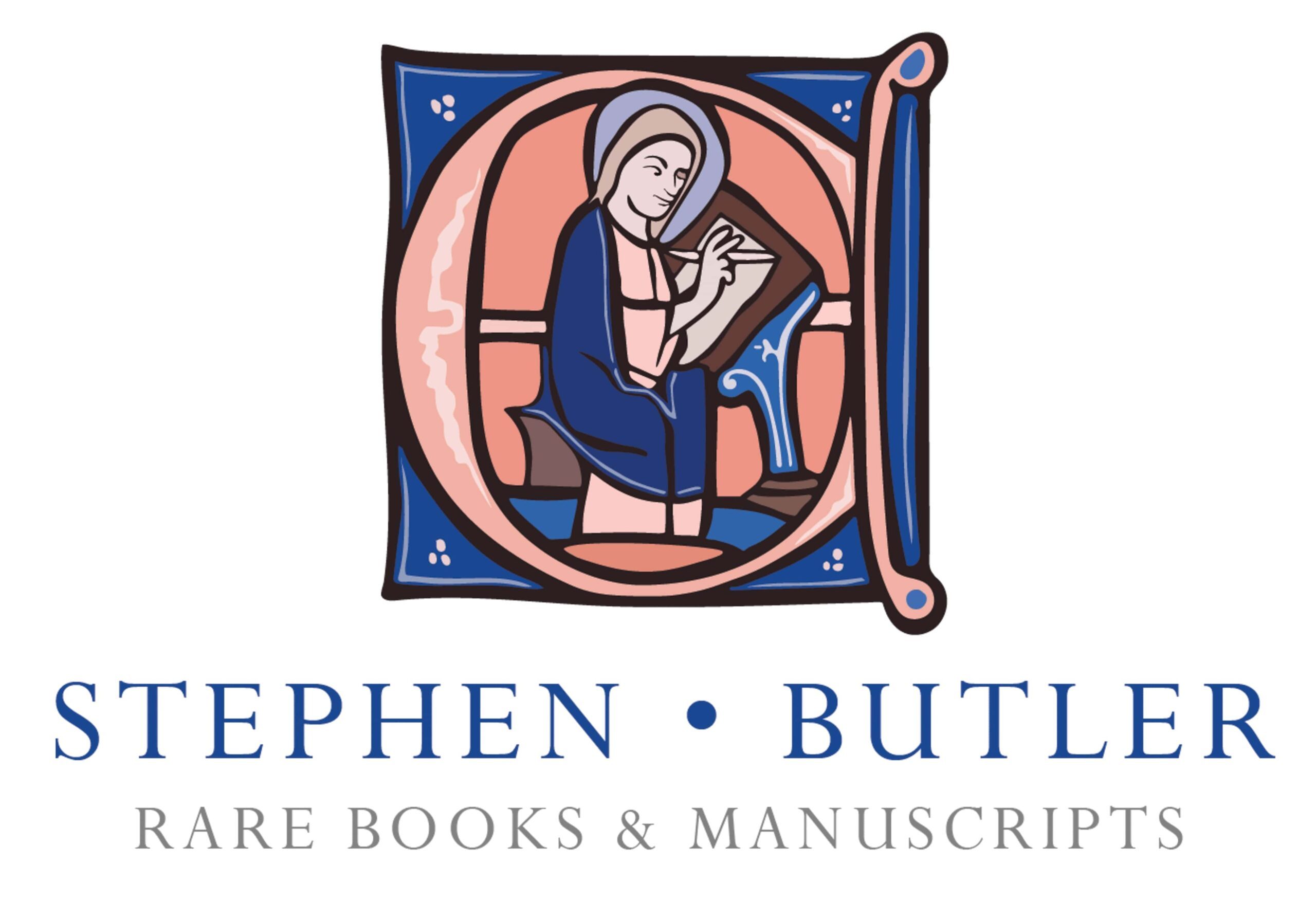



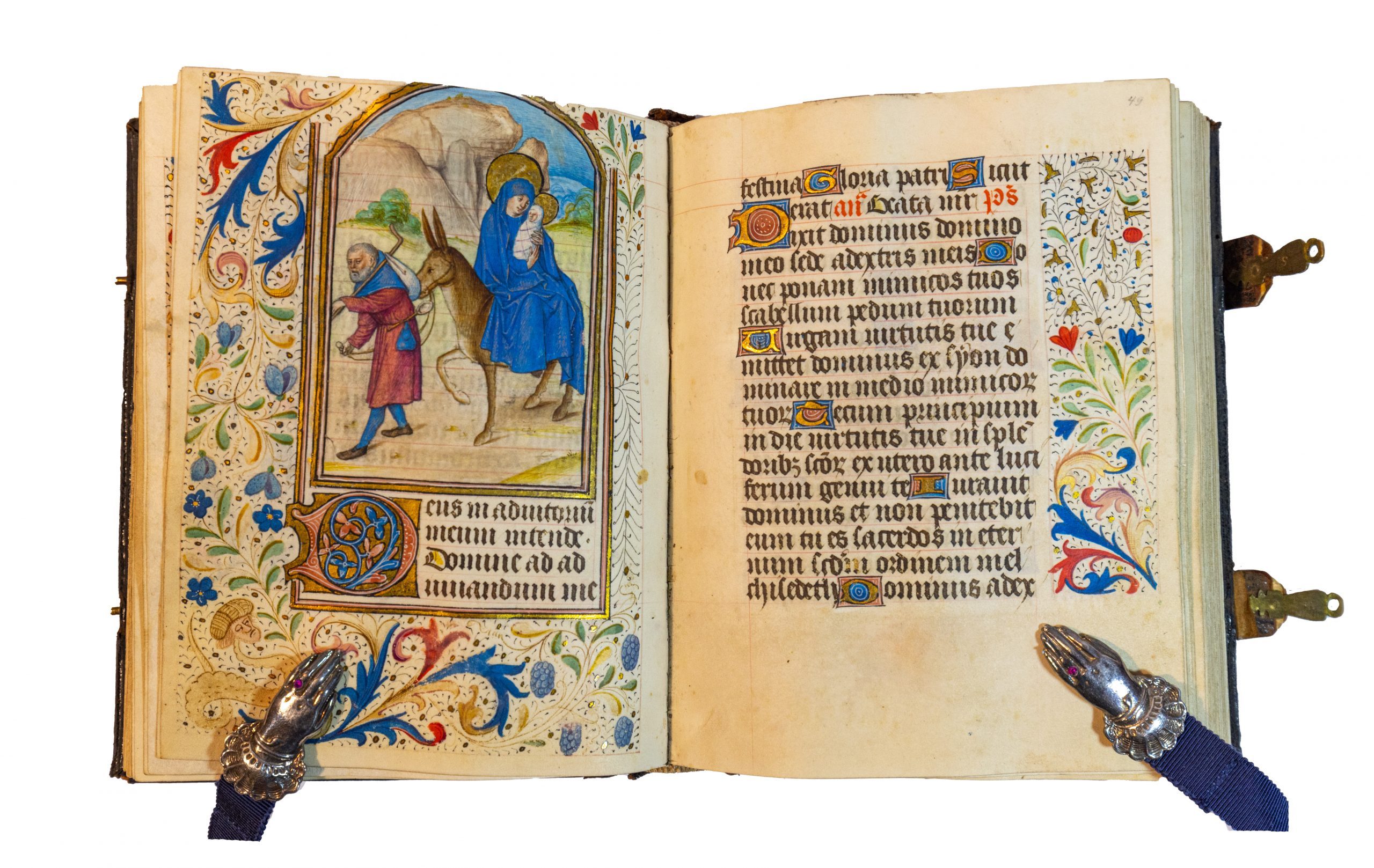

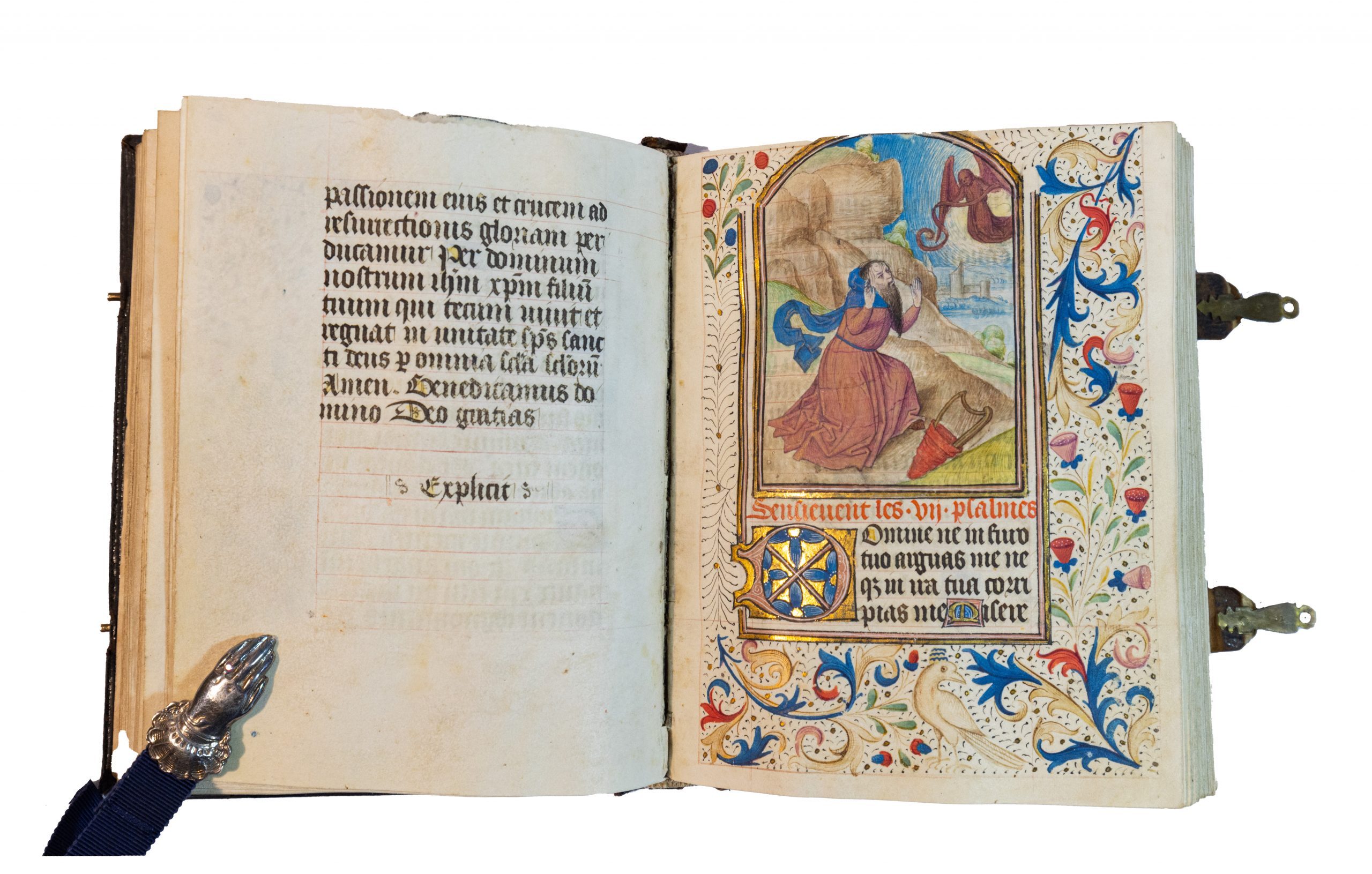
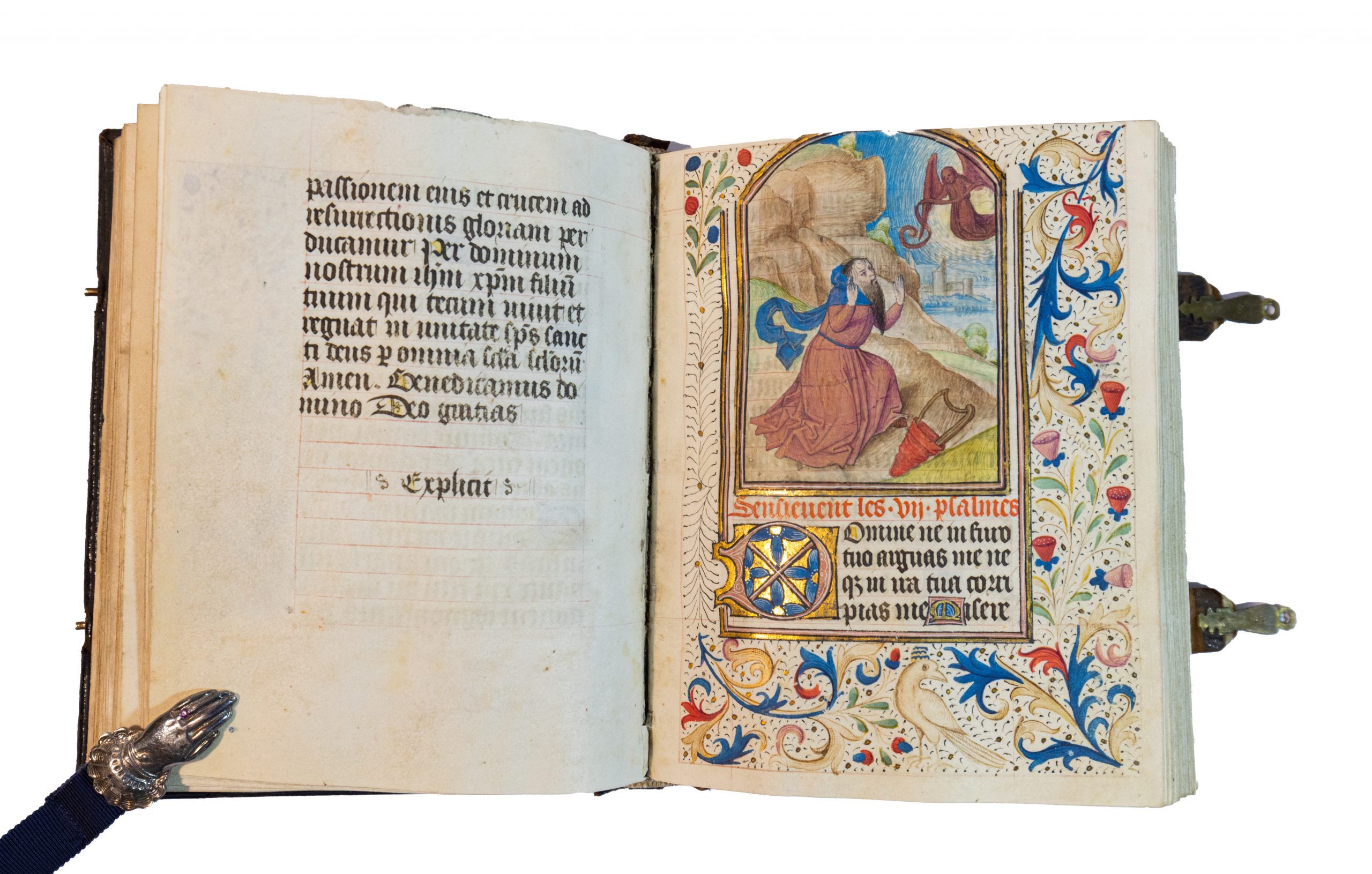
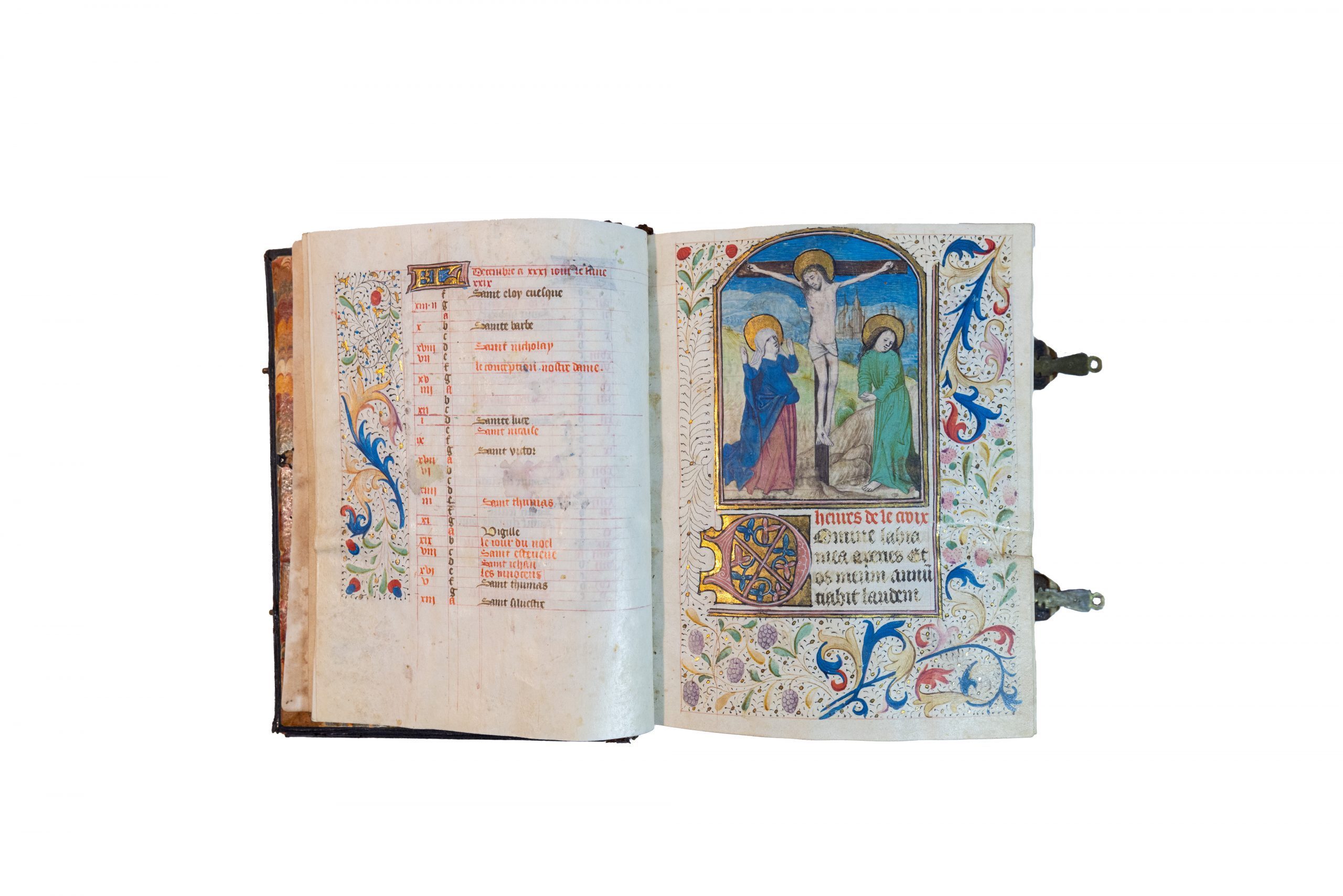
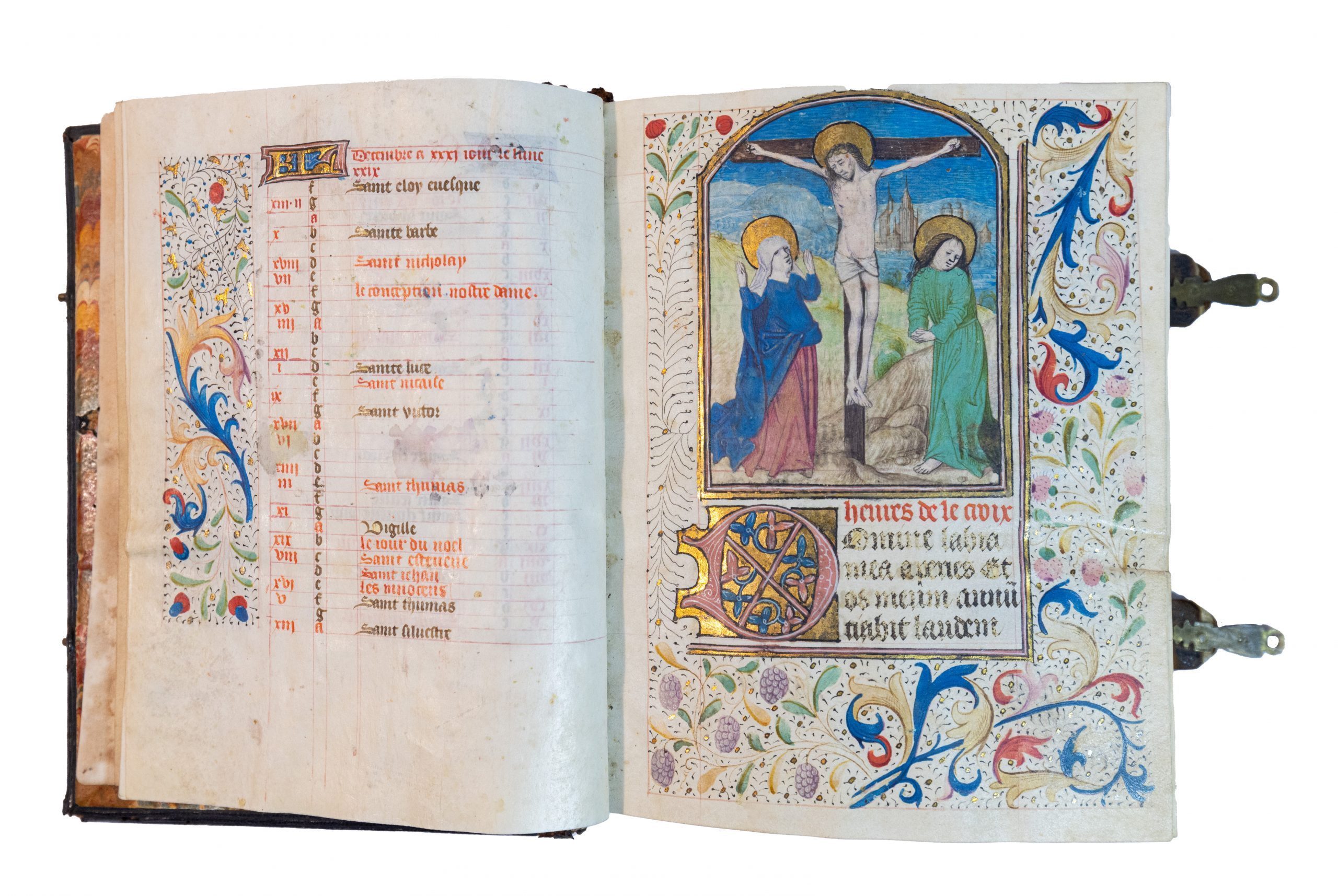

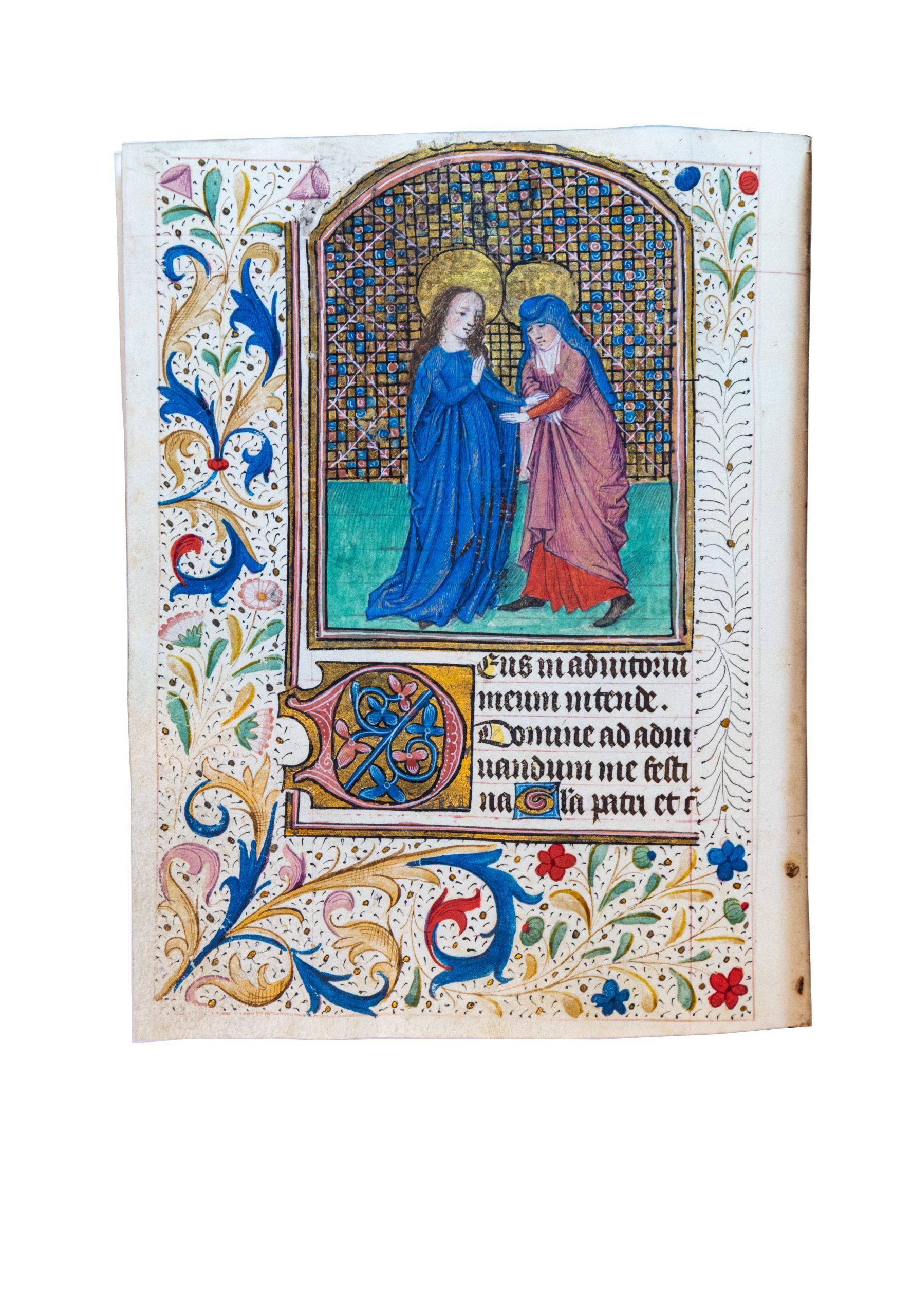
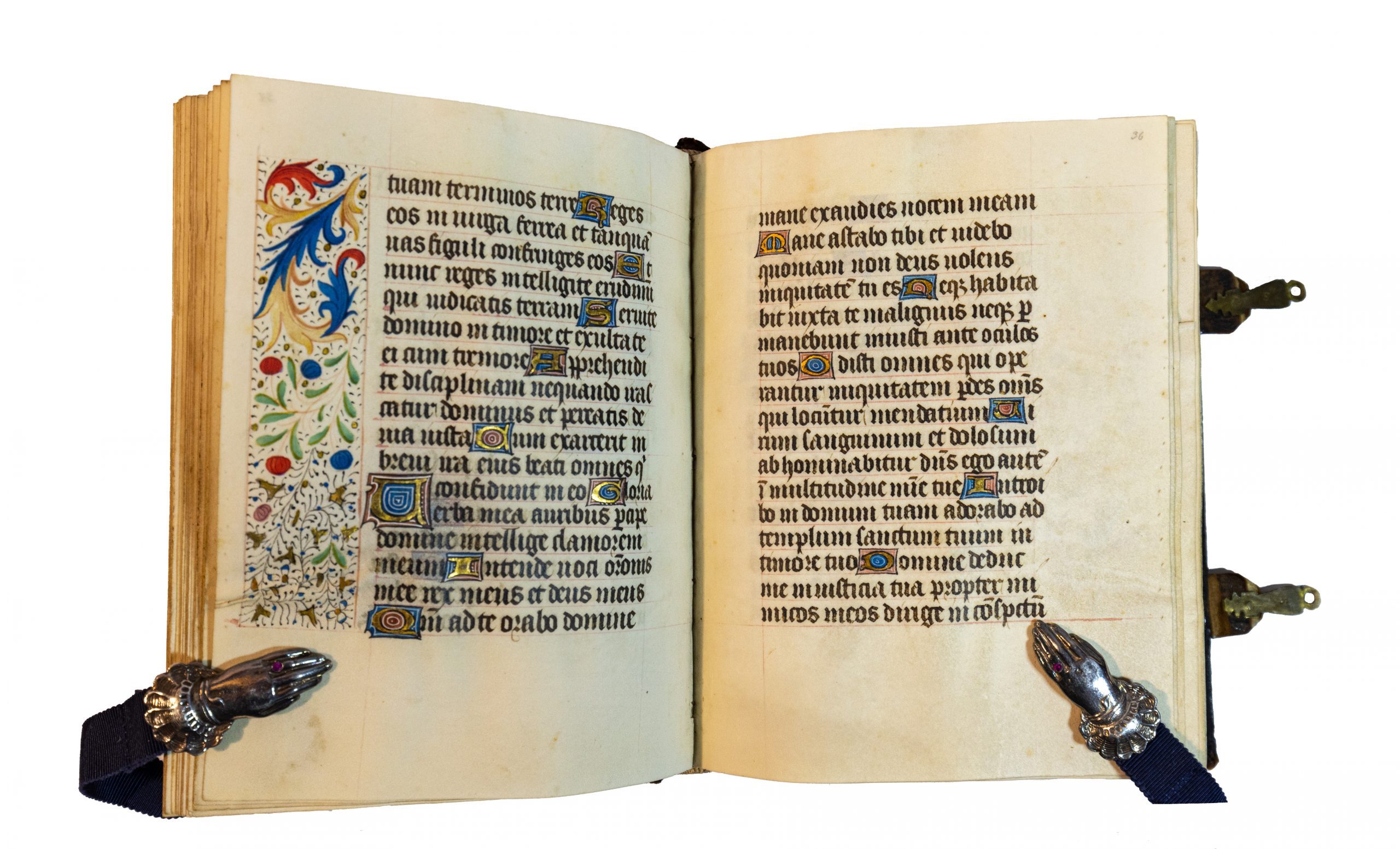
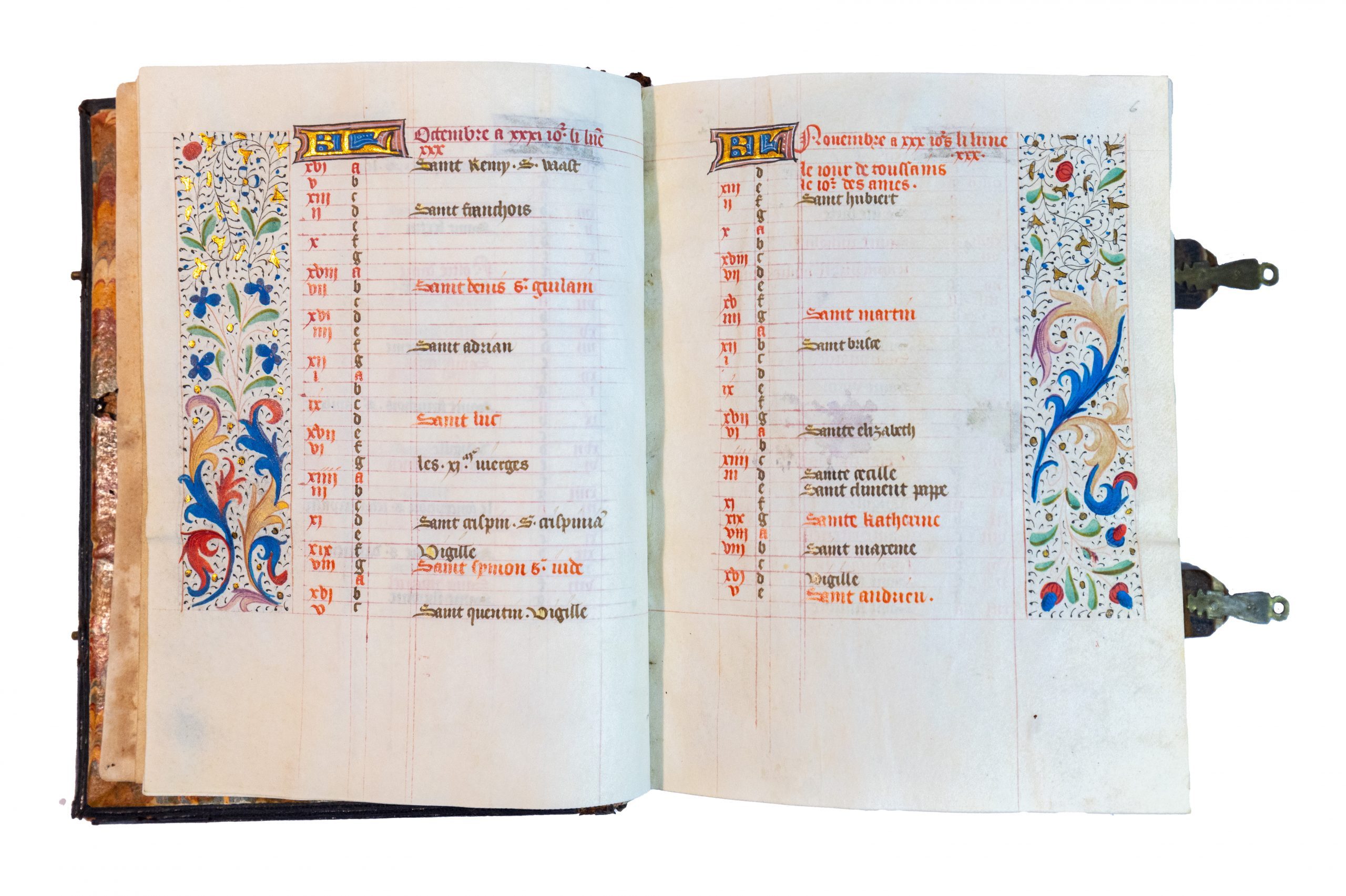
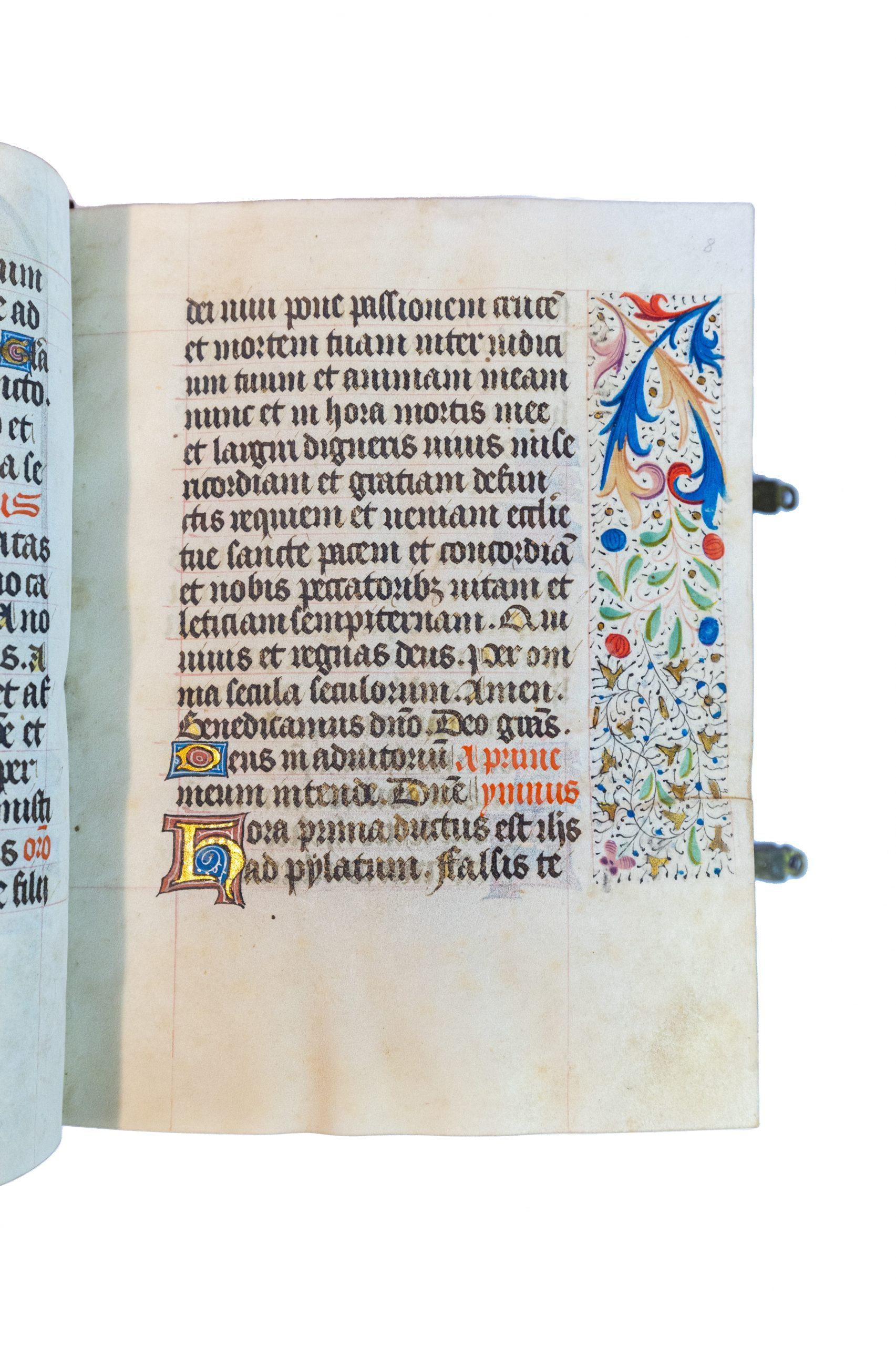
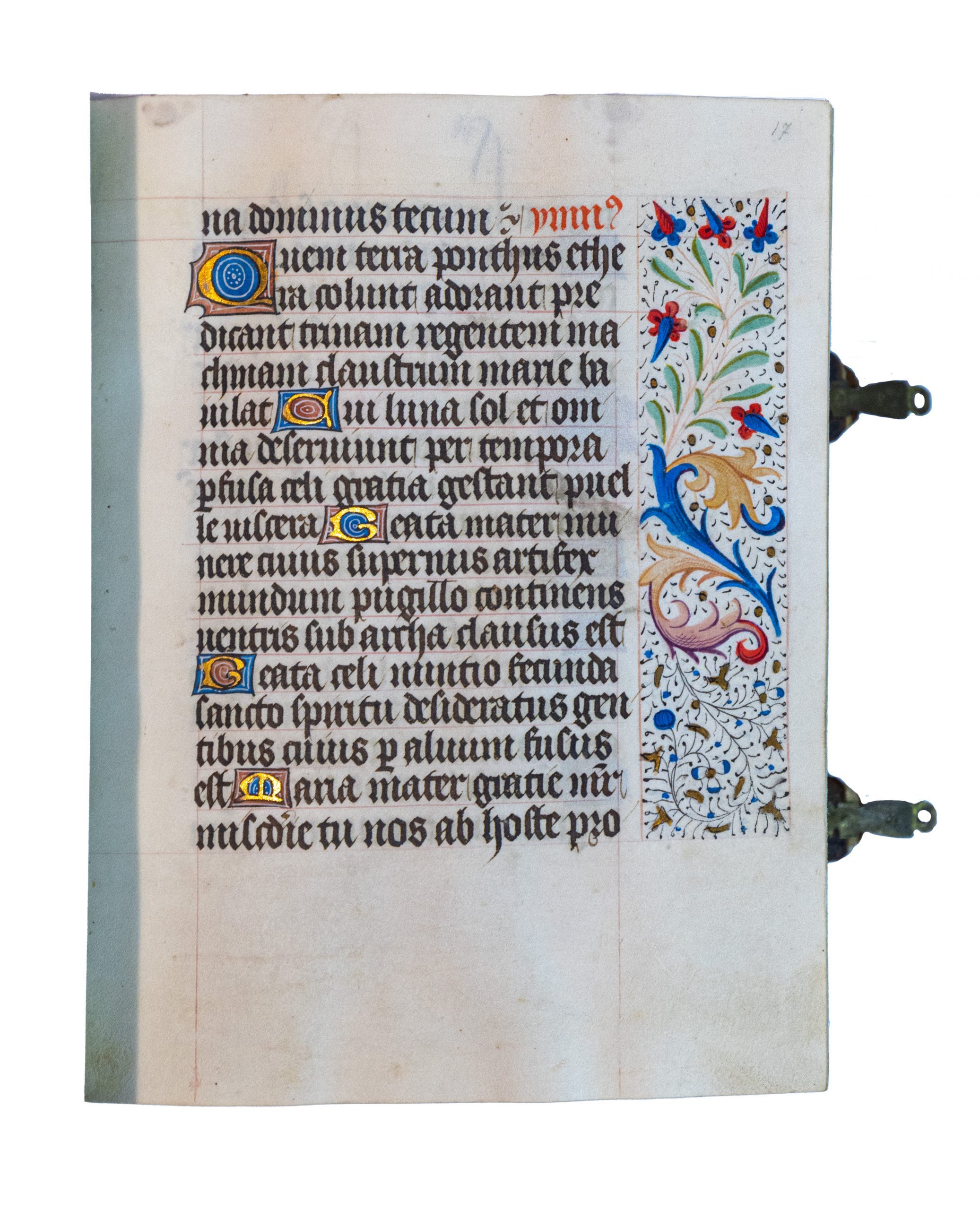
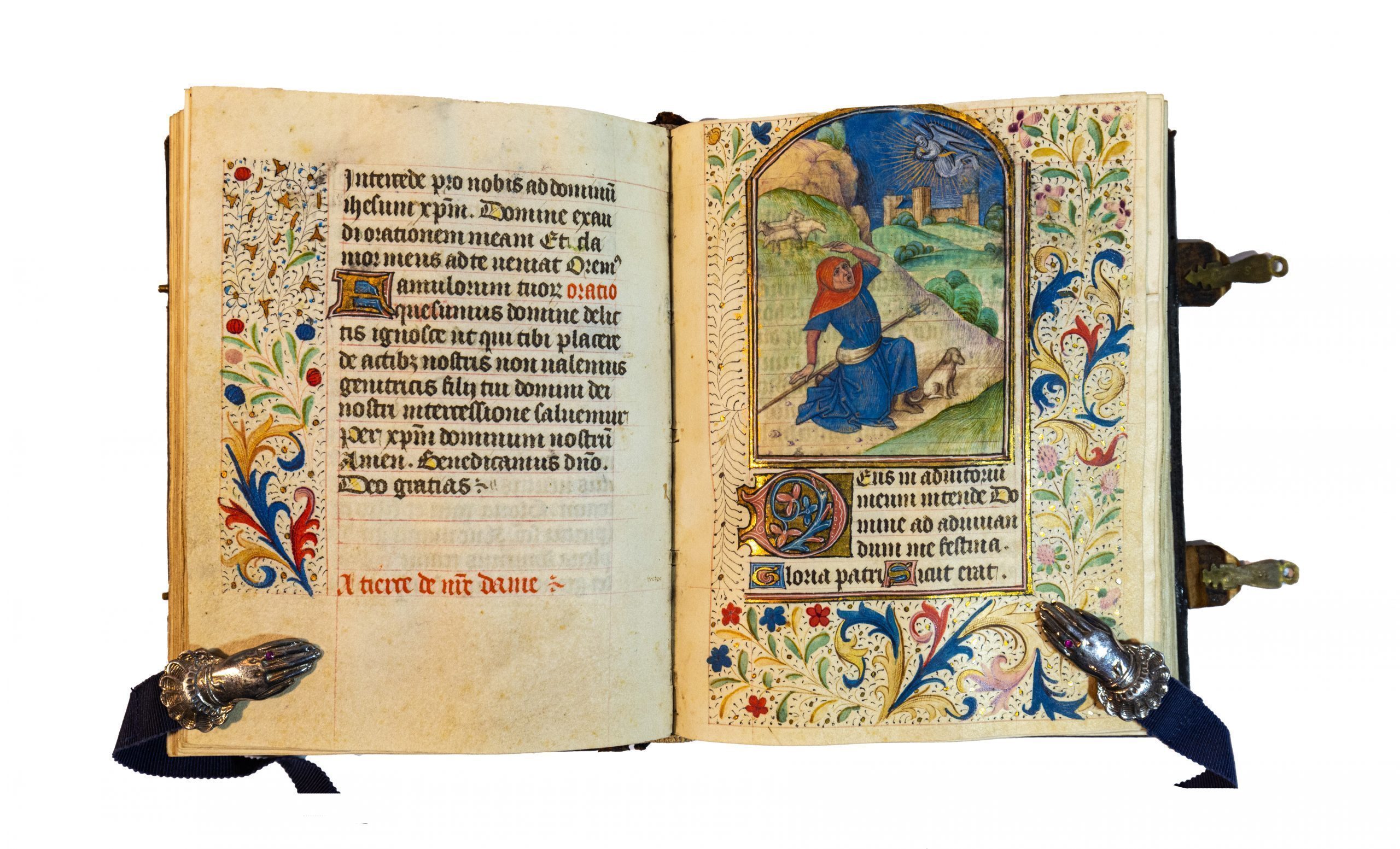


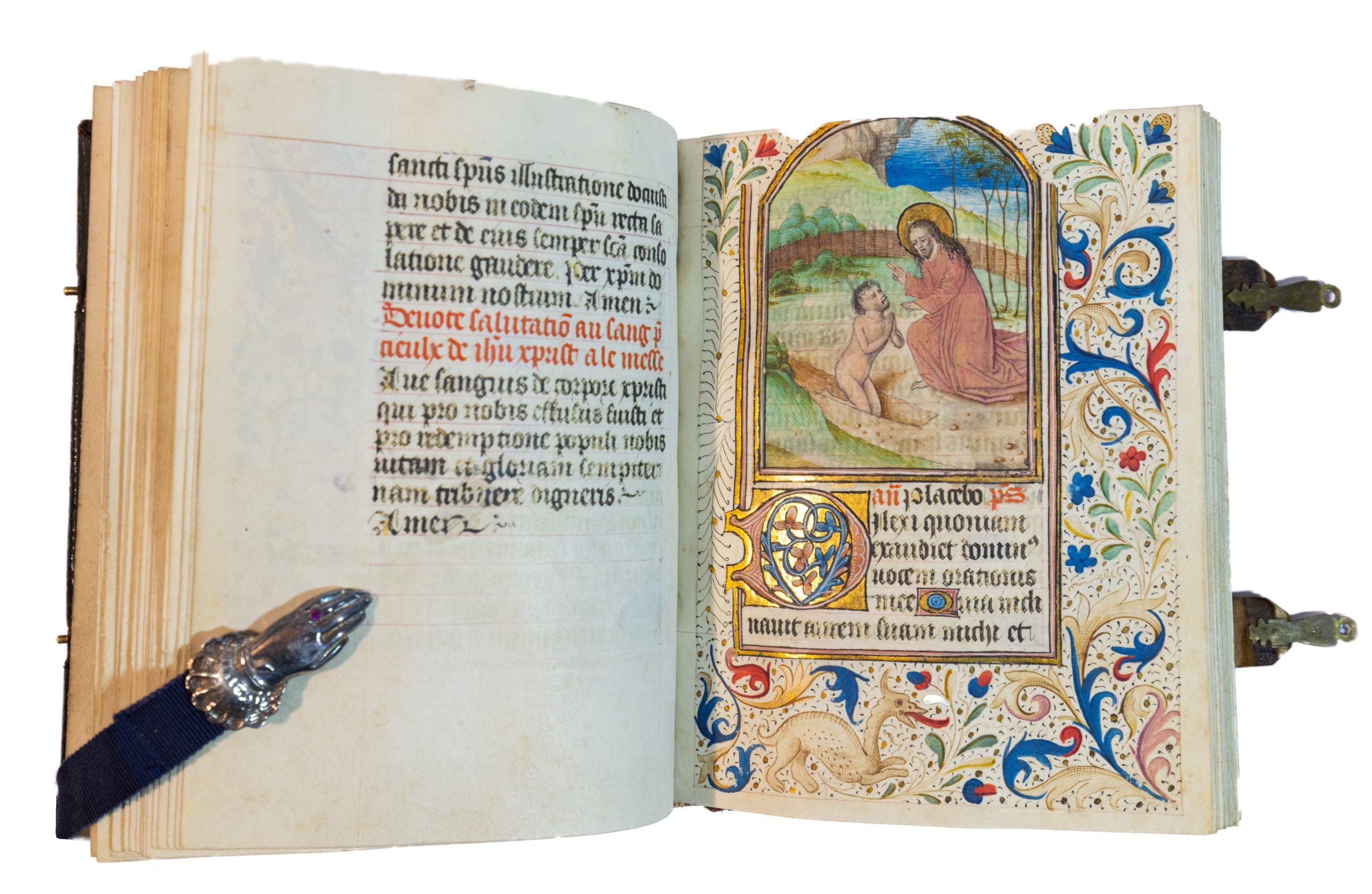
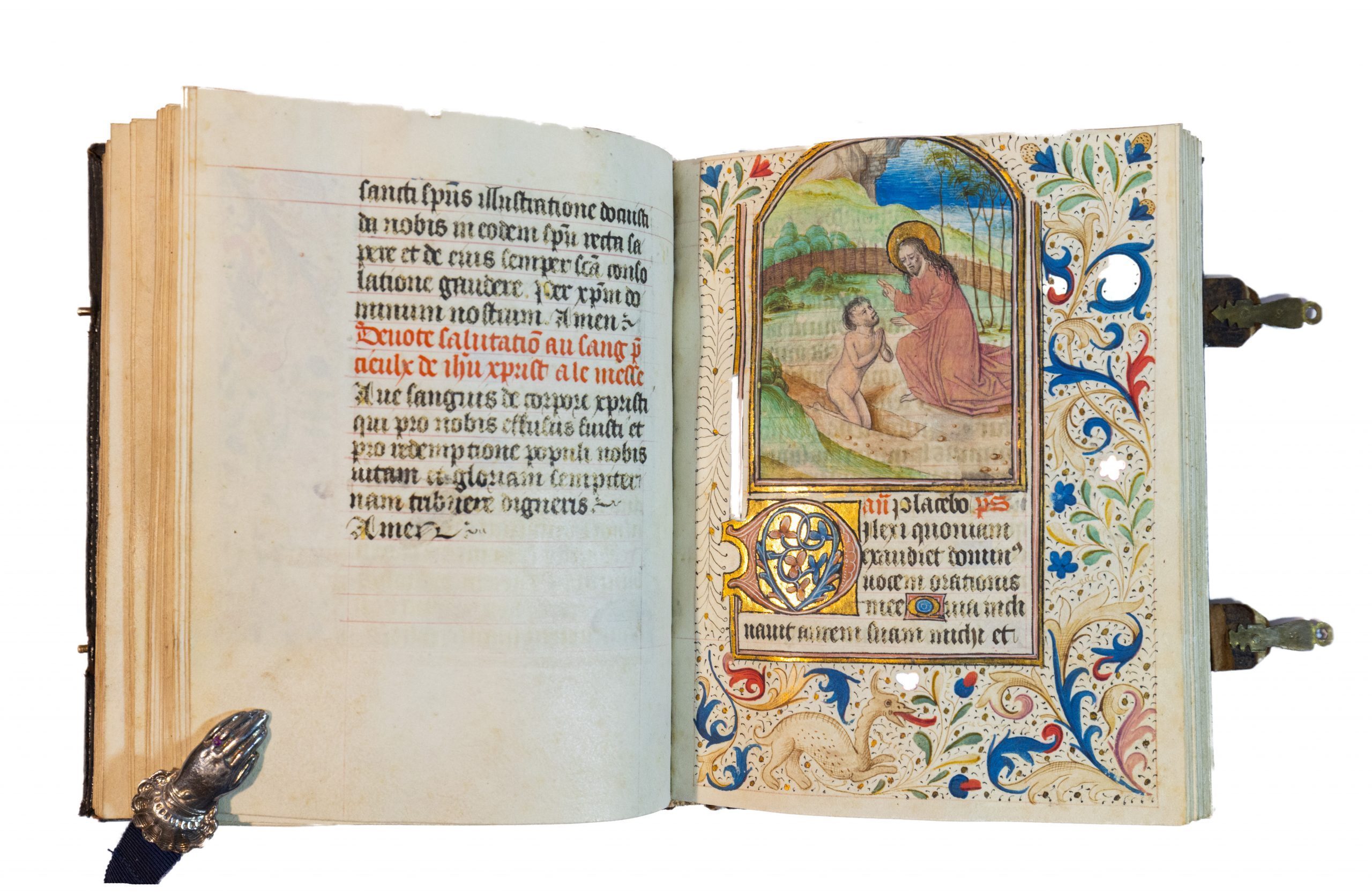

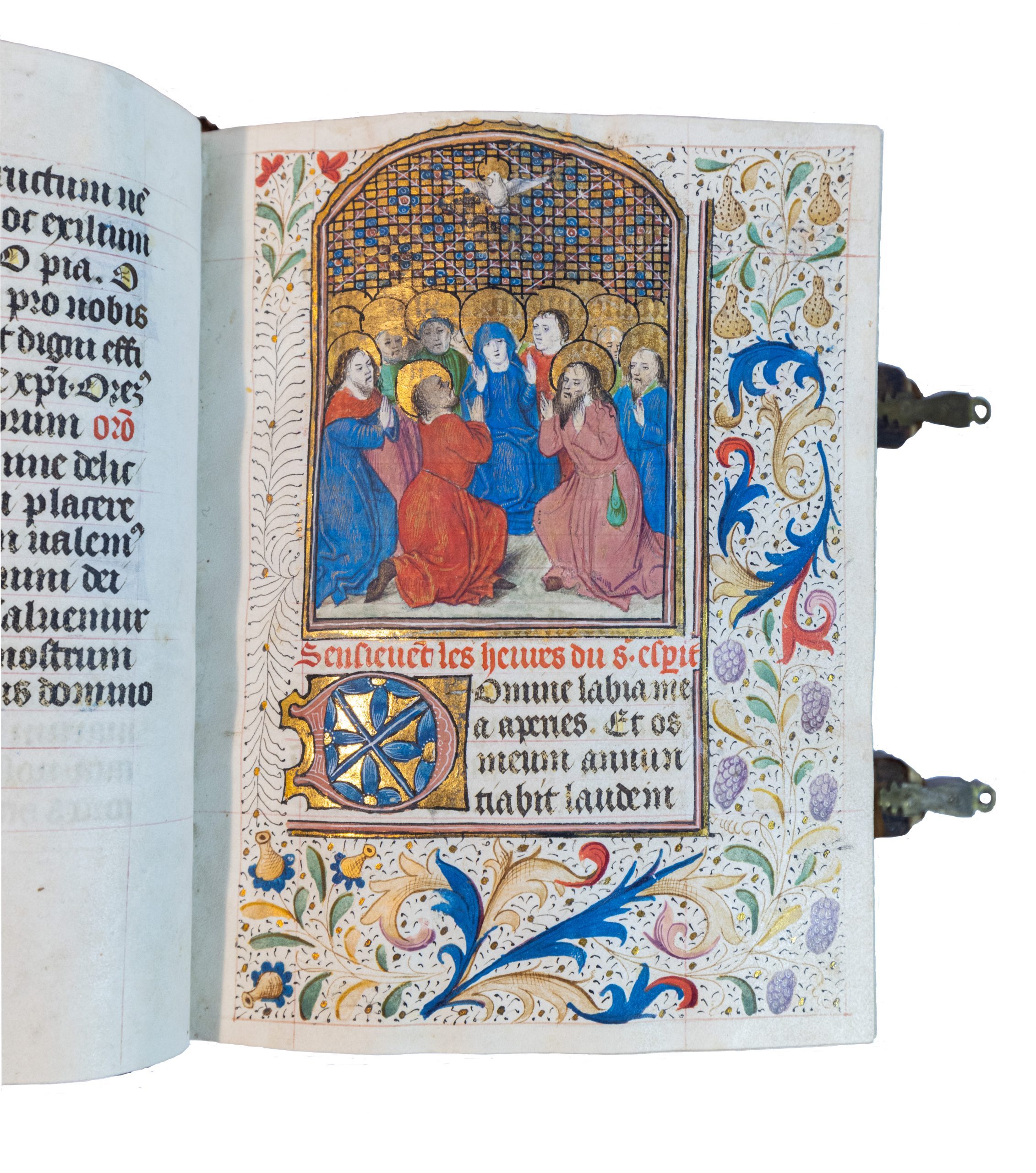
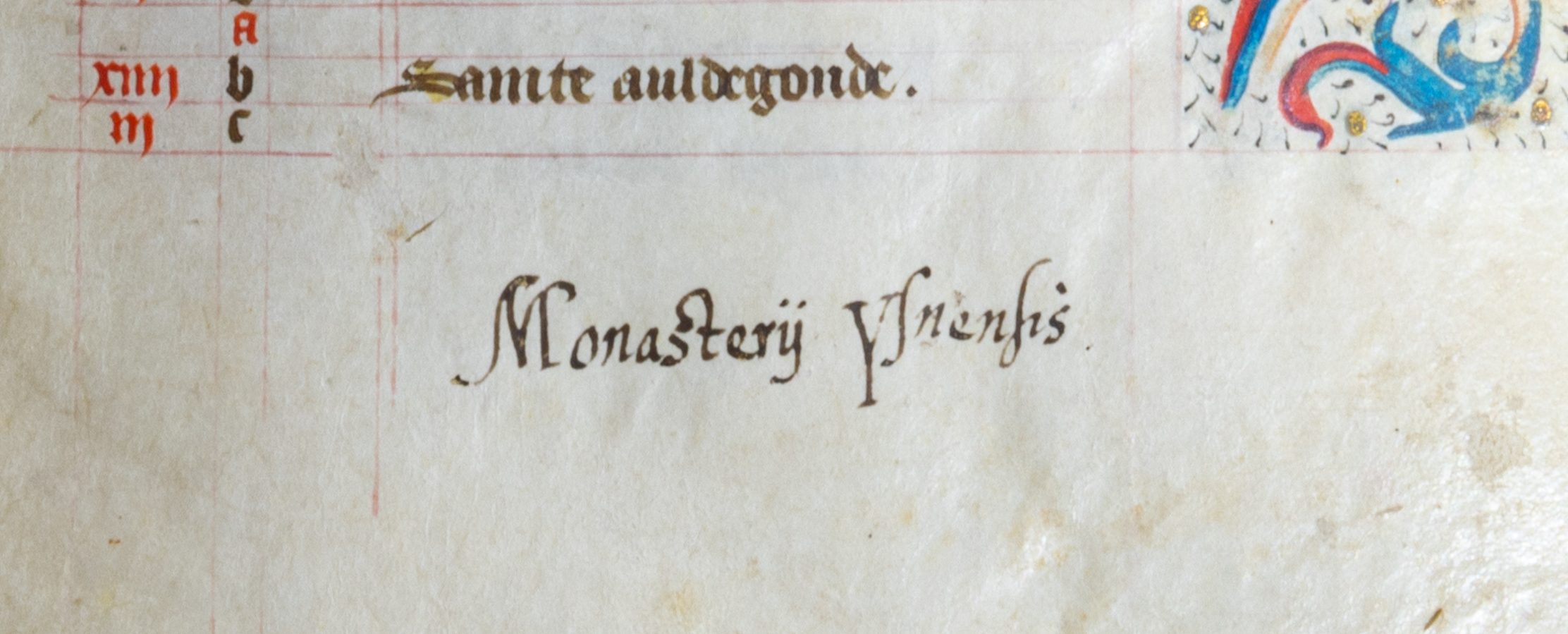

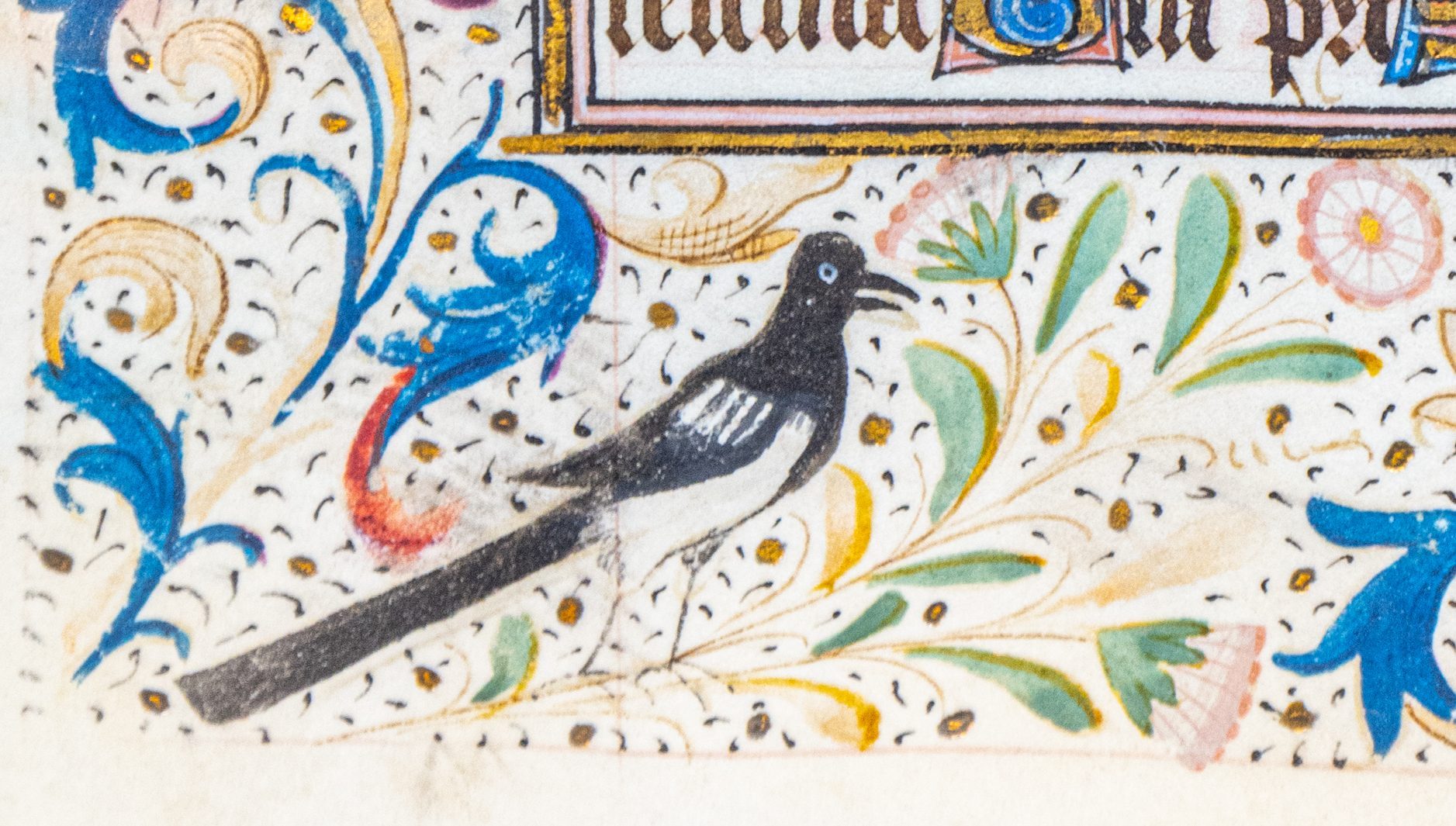
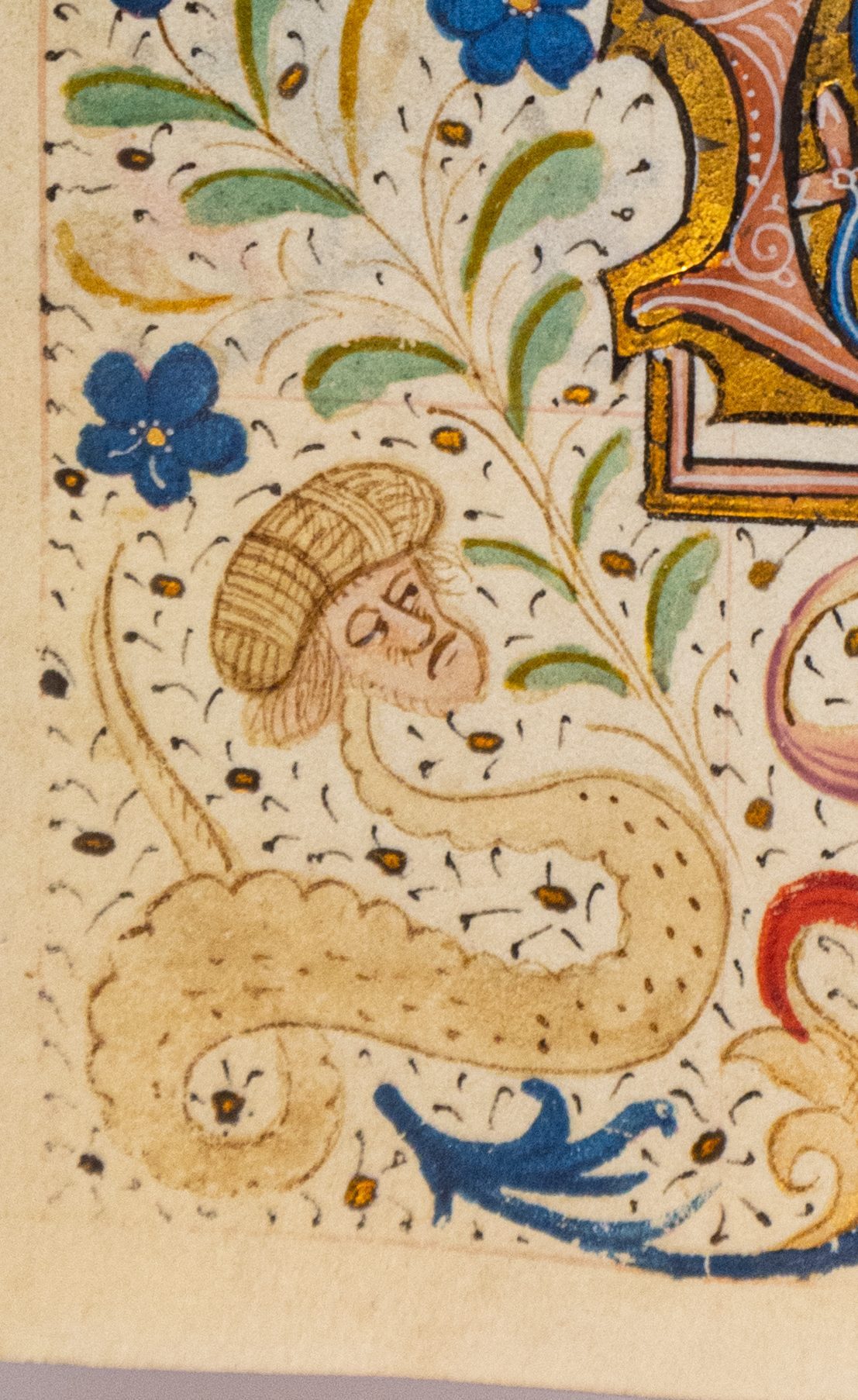
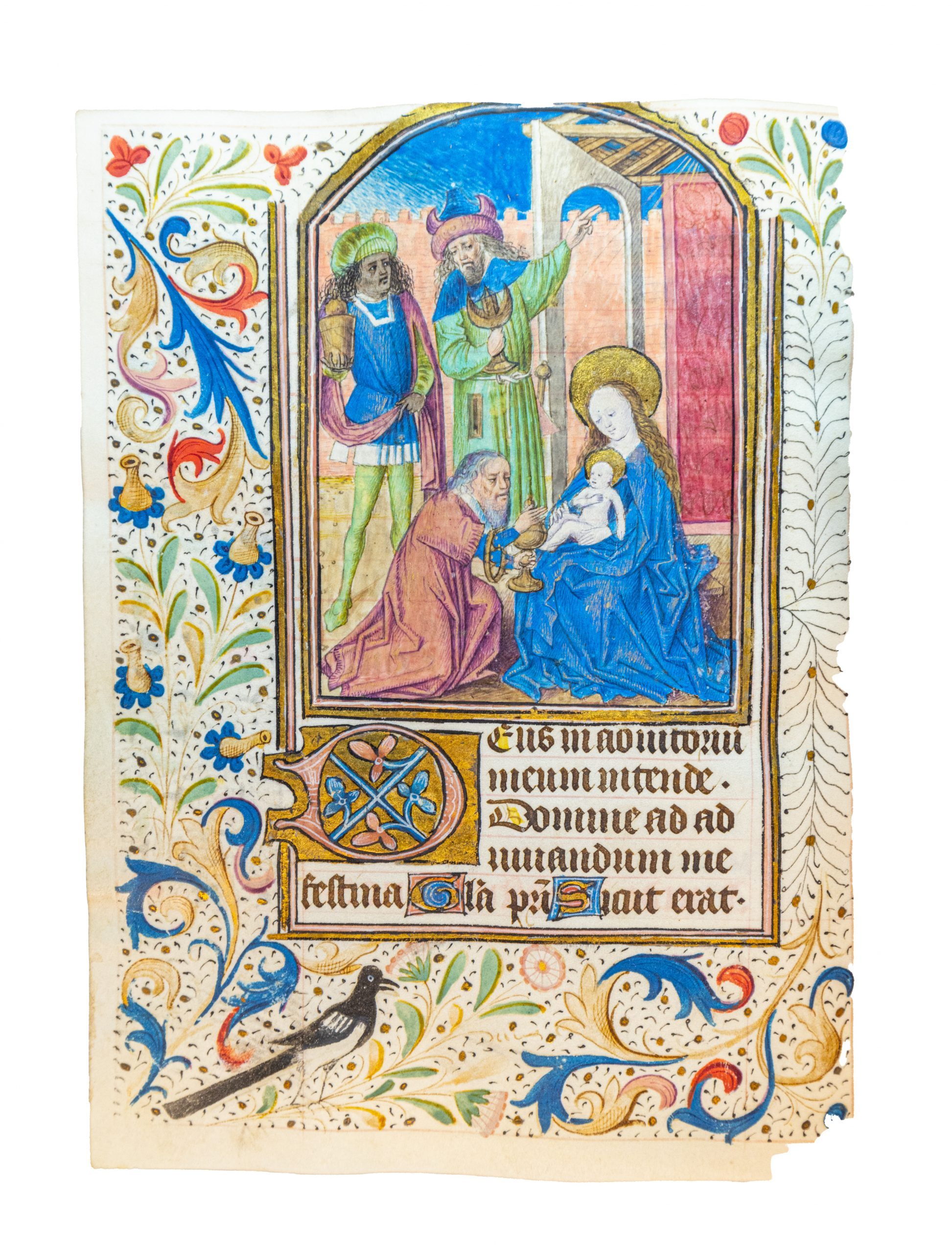
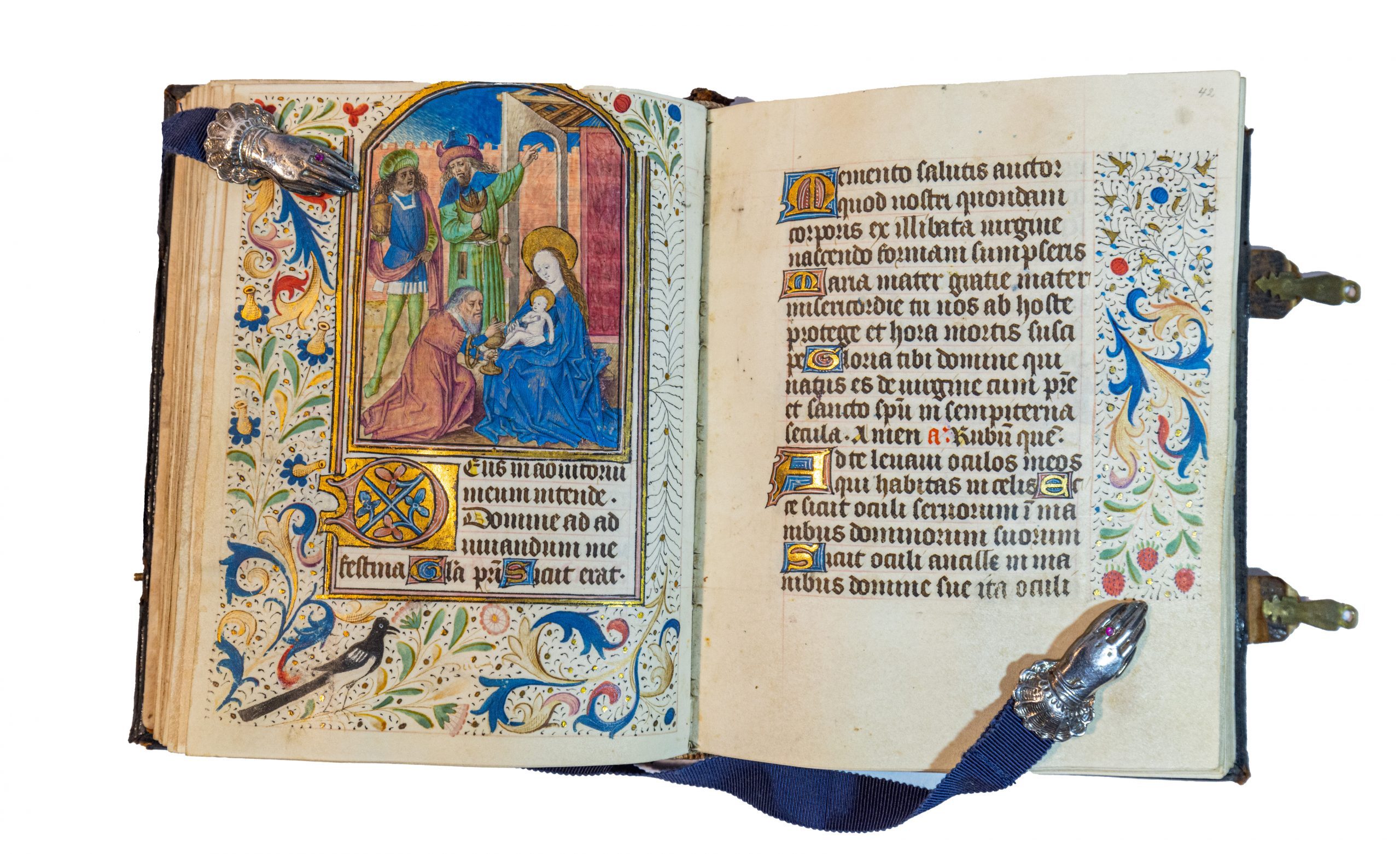

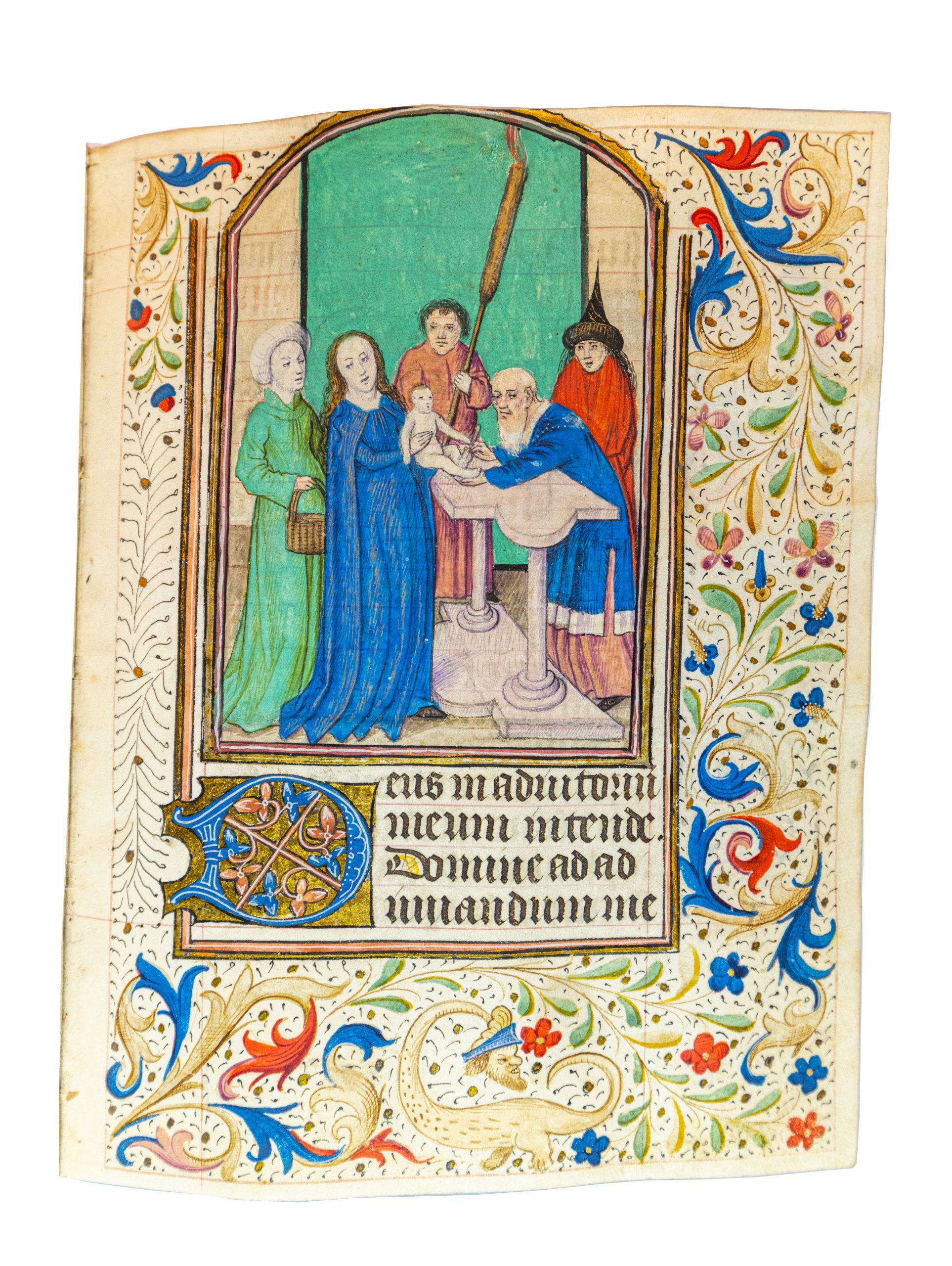
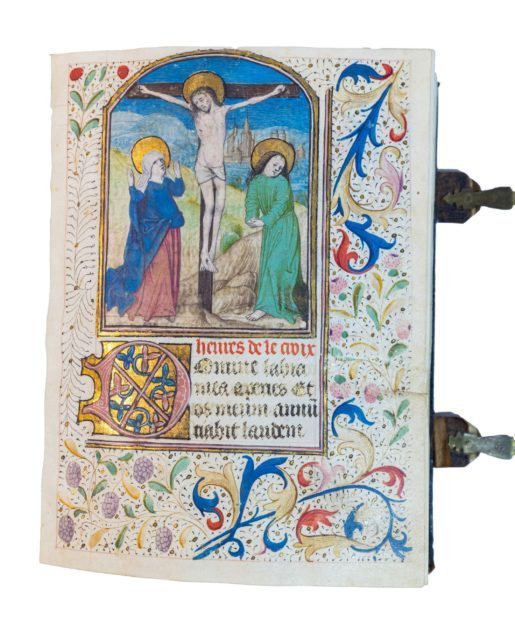
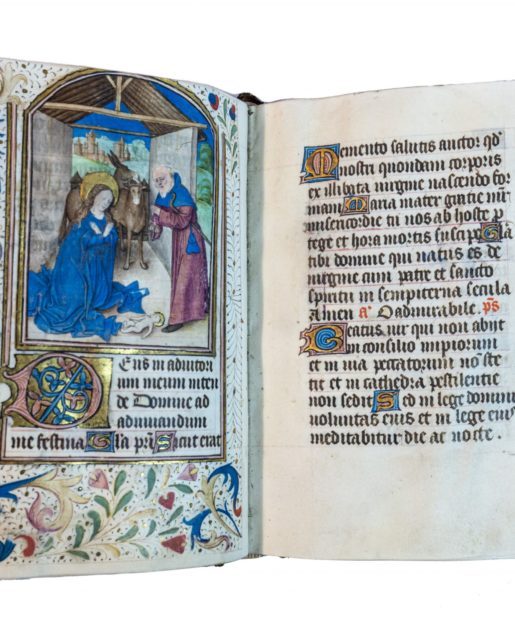
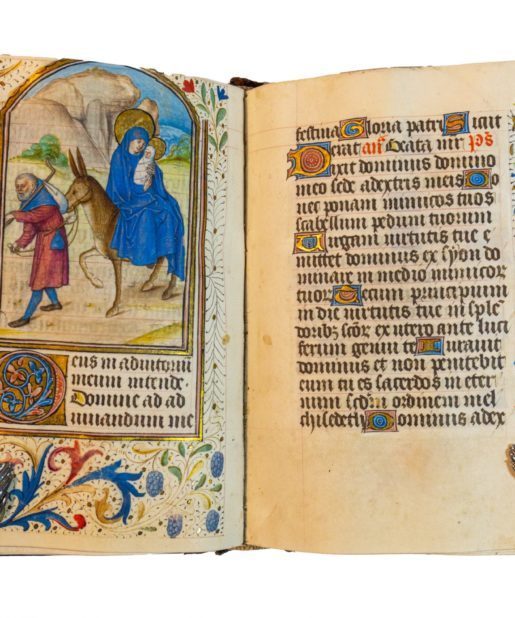
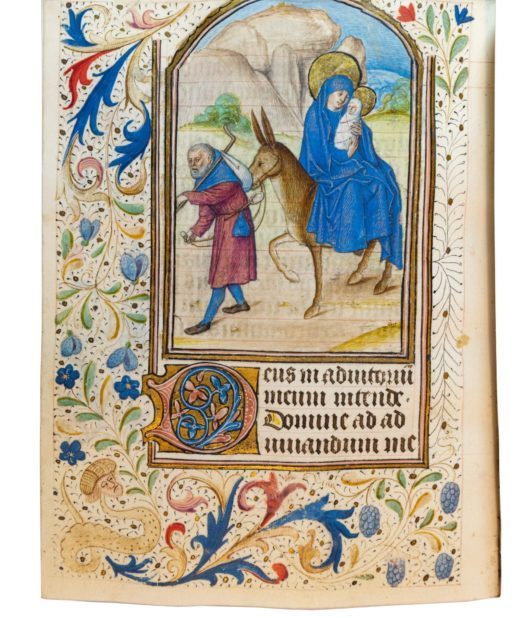
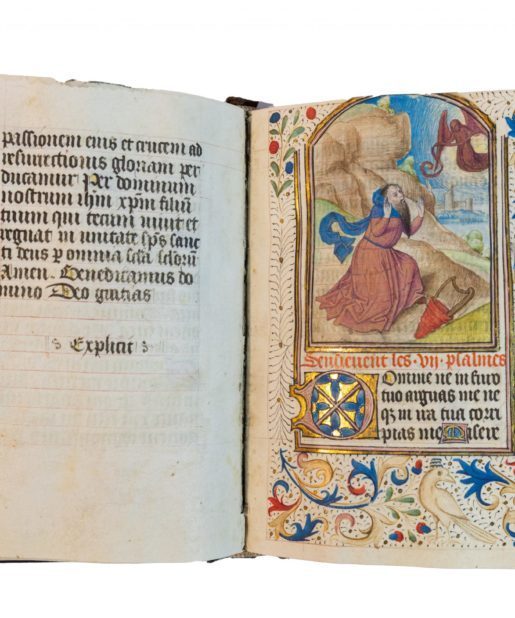
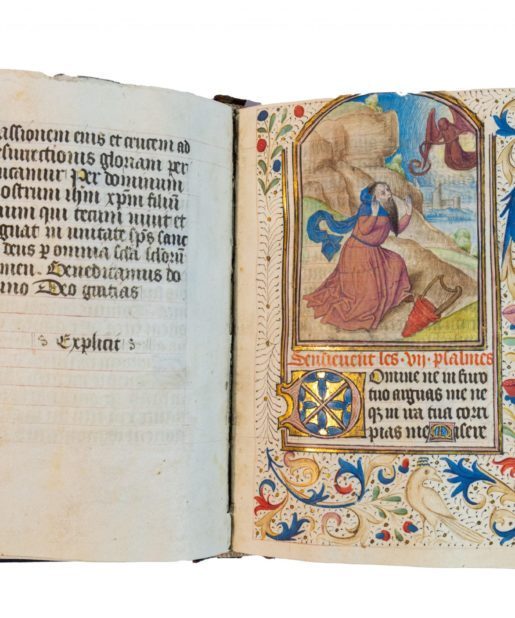
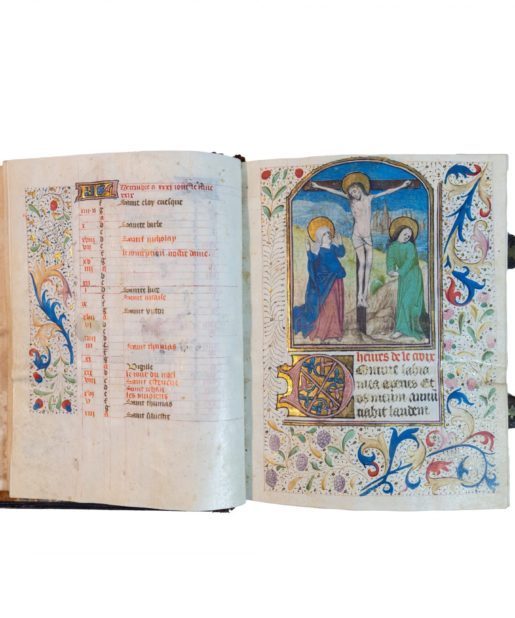
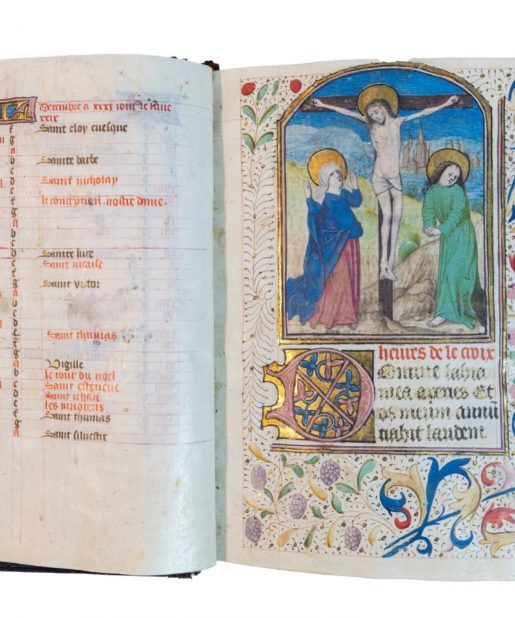
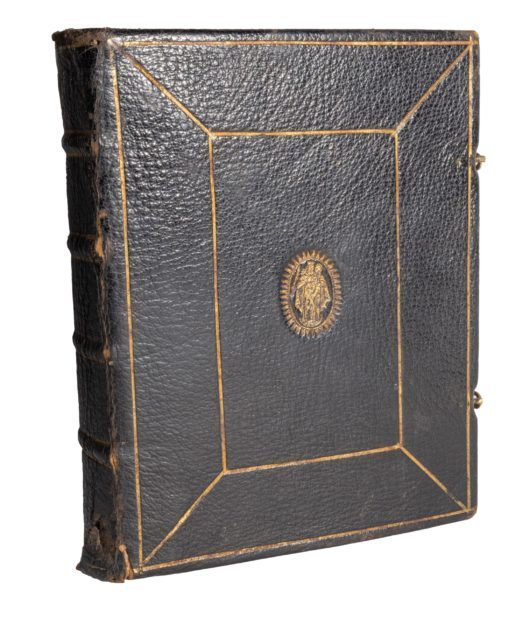
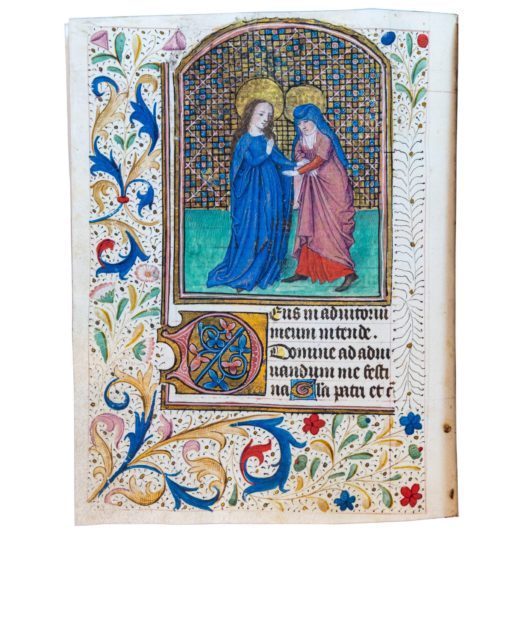
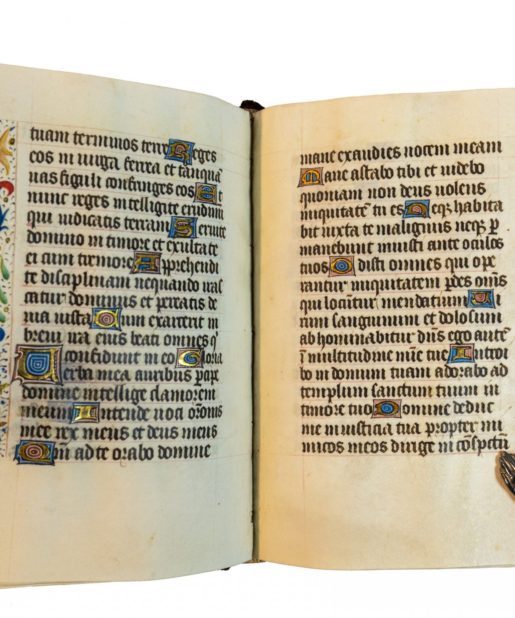
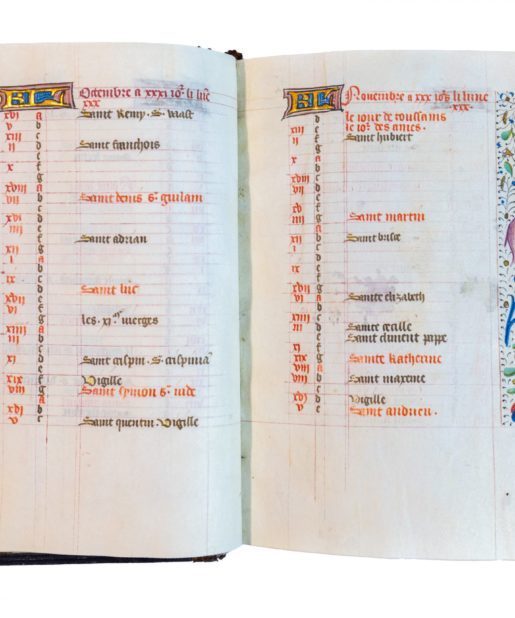
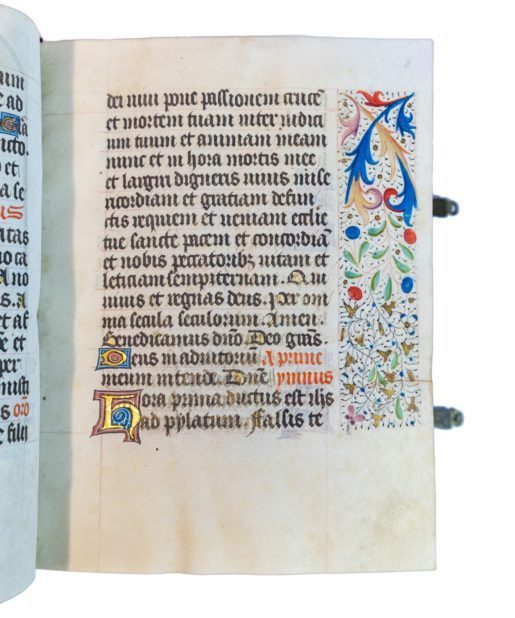
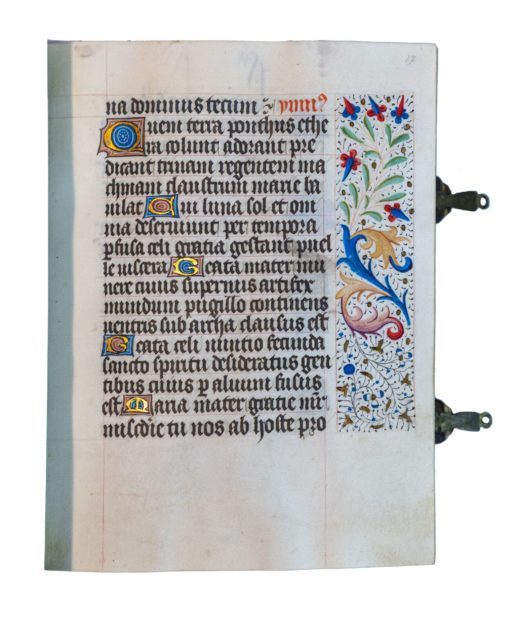
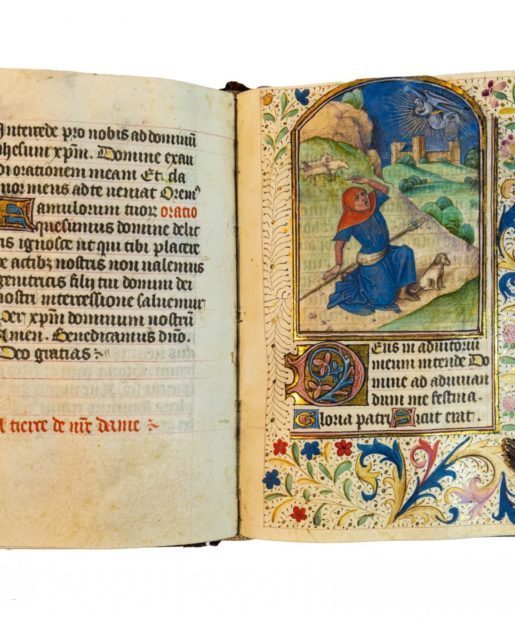
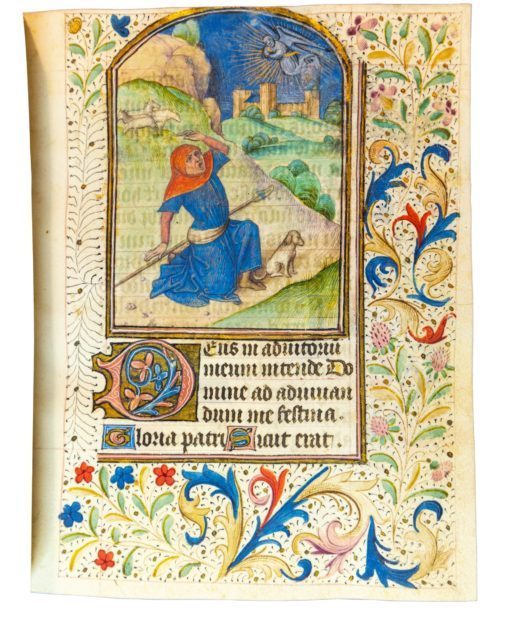
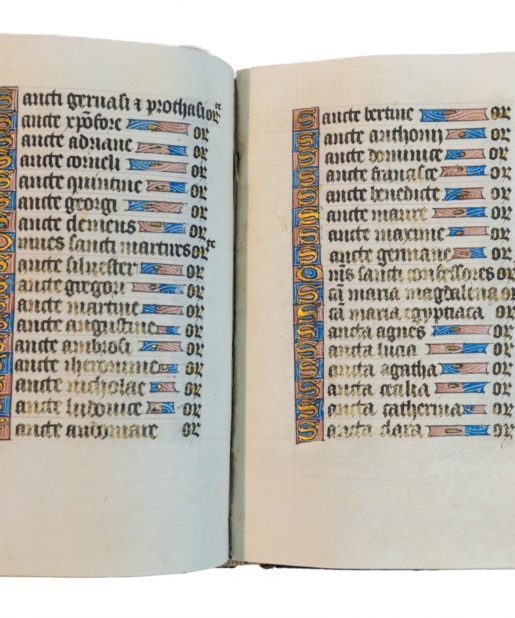
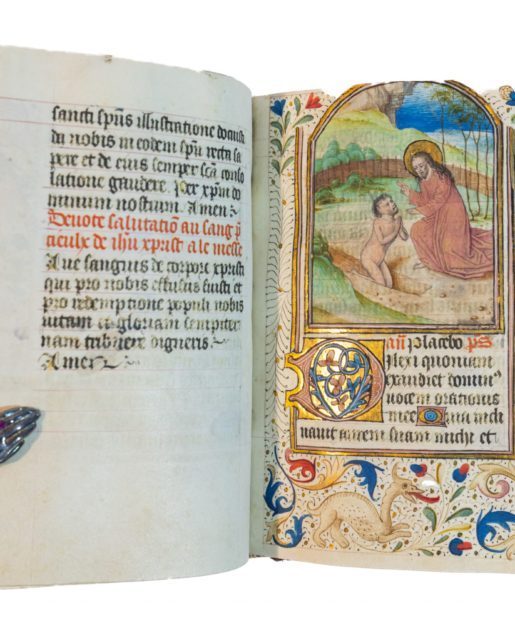
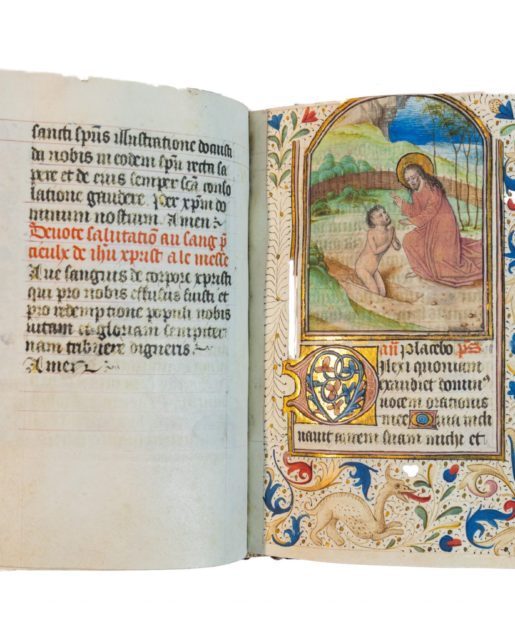
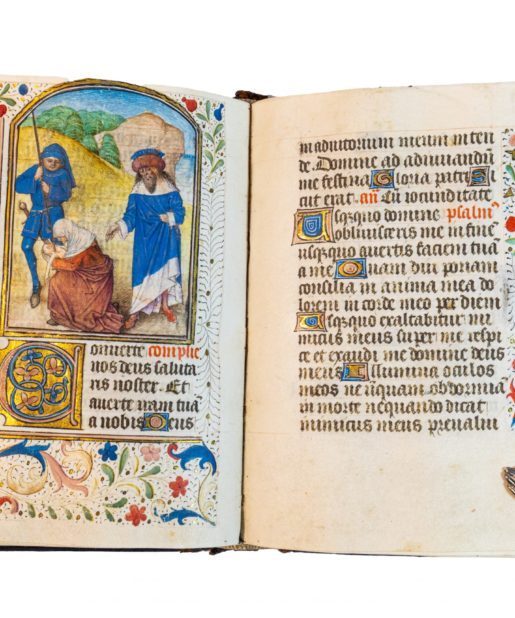
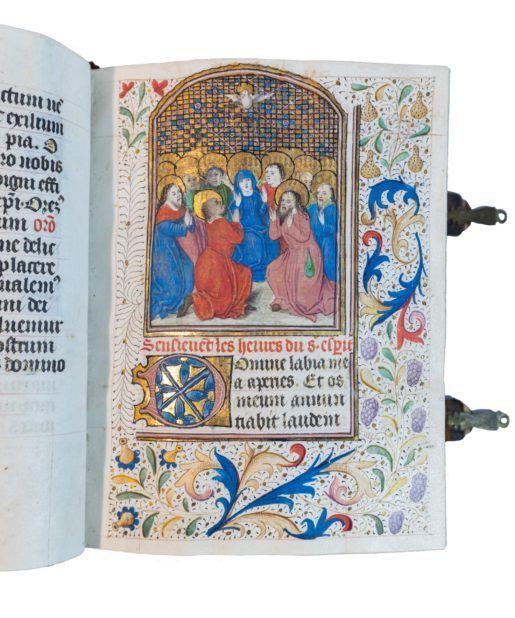
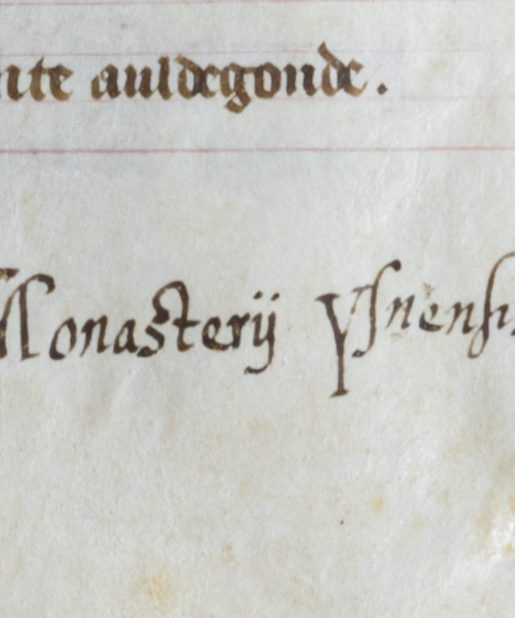
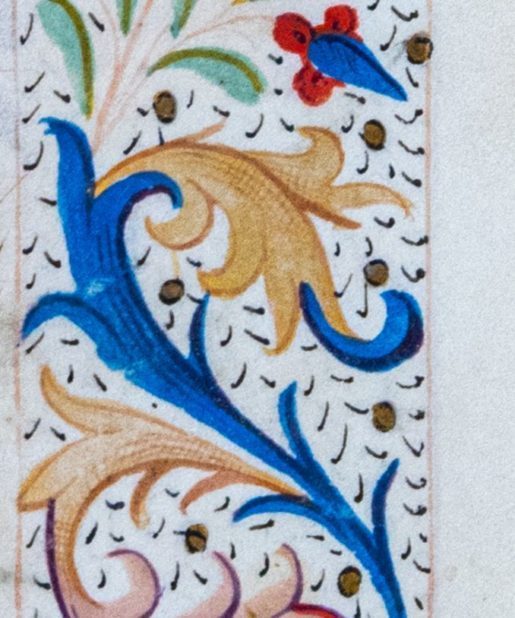
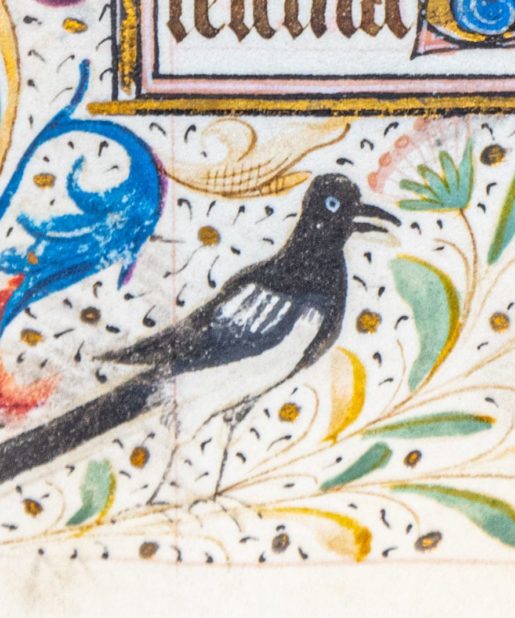
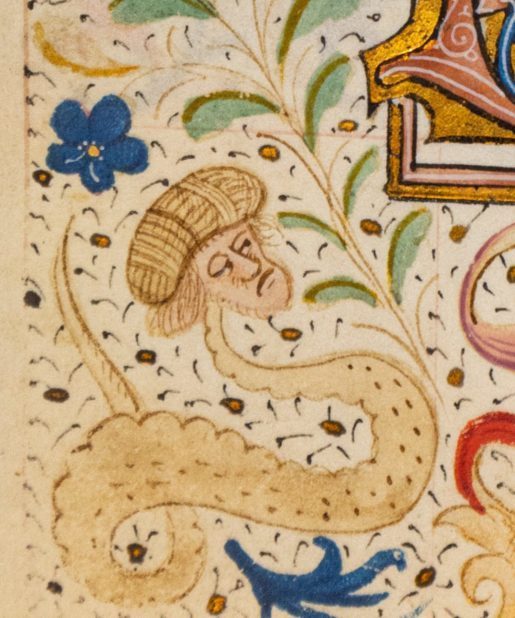
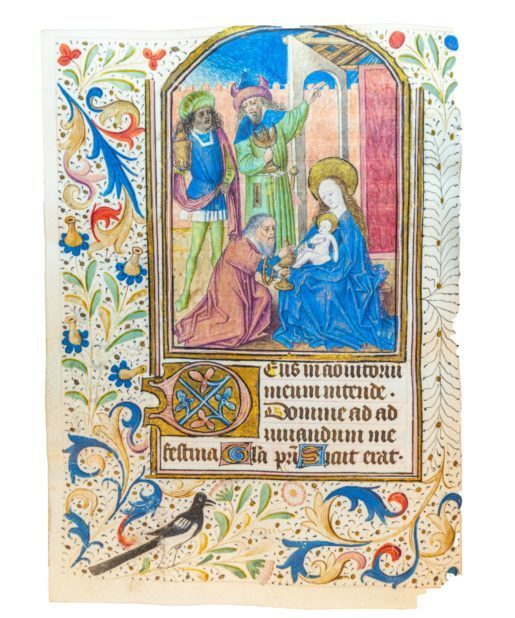
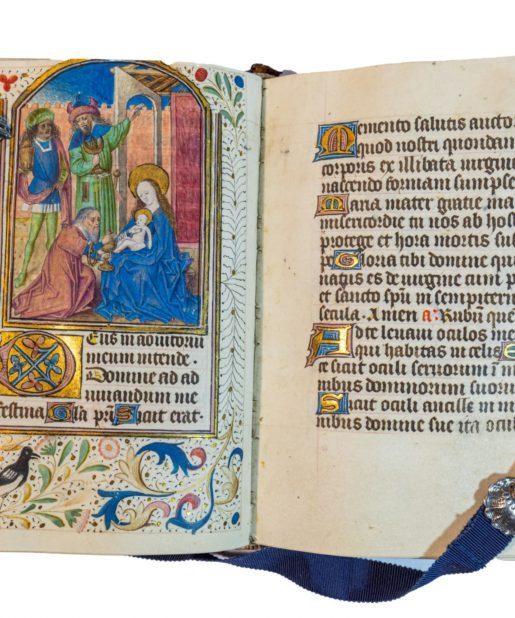
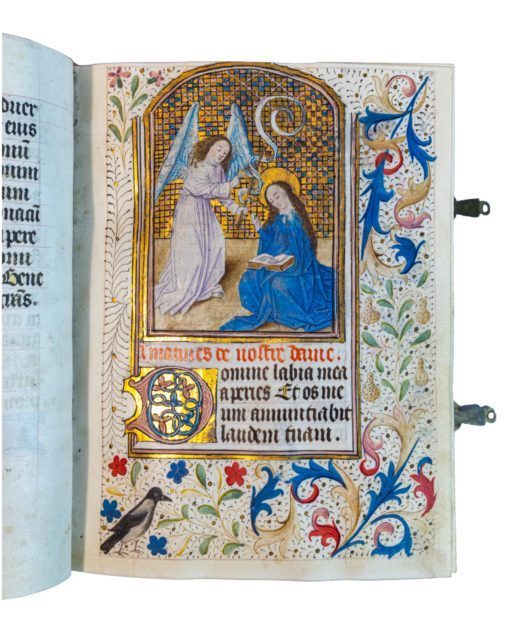
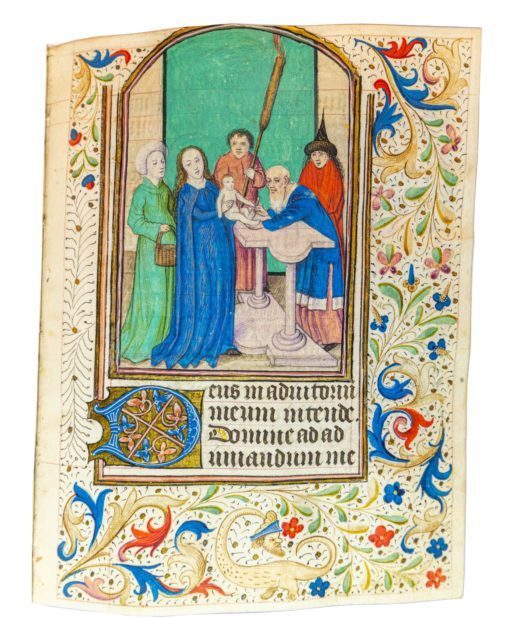
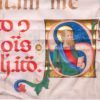

![St James Preaching in an historiated initial on a leaf from a Bible in Latin [Paris, late 13th or early 14th century] St James Preaching in an historiated initial on a leaf from a Bible in Latin [Paris, late 13th or early 14th century]](https://butlerrarebooks.co.uk/wp-content/uploads/2022/02/IMG_2254-2-515x618.jpg)
![The Annunciation to Zechariah, on a bifolium from an Antiphonary, in Latin [Germany or Austria, (mid-?)15th century] The Annunciation to Zechariah, on a bifolium from an Antiphonary, in Latin [Germany or Austria, (mid-?)15th century]](https://butlerrarebooks.co.uk/wp-content/uploads/2021/04/IMG_0977-515x618.jpg)
![The Annunciation to Zechariah, on a bifolium from an Antiphonary, in Latin [Germany or Austria, (mid-?)15th century] The Annunciation to Zechariah, on a bifolium from an Antiphonary, in Latin [Germany or Austria, (mid-?)15th century]](https://butlerrarebooks.co.uk/wp-content/uploads/2021/04/IMG_0769-515x618.jpg)
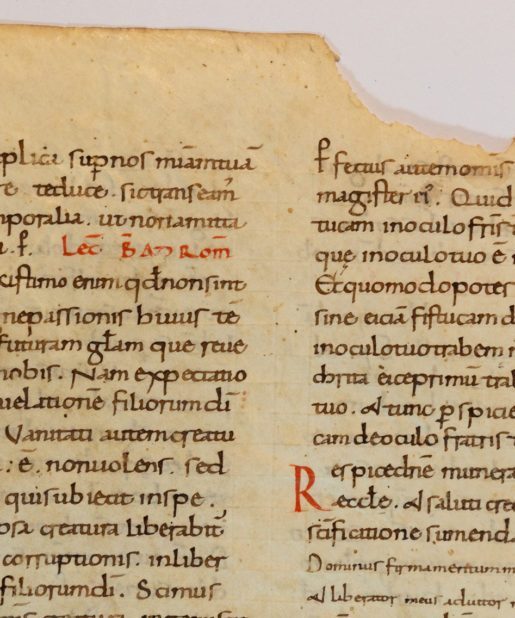
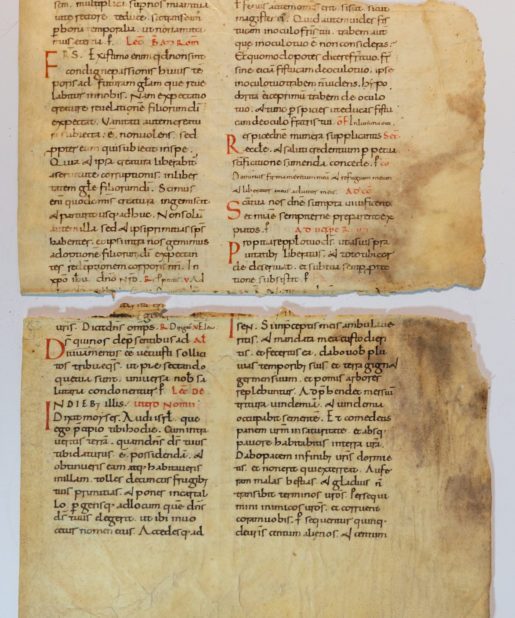
![Saints Peter and Paul, in an illuminated historiated initial ‘N’, cut from a Gradual in Latin on parchment [Italy (Florence); 15th century (c.1470s)] Saints Peter and Paul, in an illuminated historiated initial ‘N’, cut from a Gradual in Latin on parchment [Italy (Florence); 15th century (c.1470s)]](https://butlerrarebooks.co.uk/wp-content/uploads/2022/02/IMG_6782-515x618.jpg)
![Saints Peter and Paul, in an illuminated historiated initial ‘N’, cut from a Gradual in Latin on parchment [Italy (Florence); 15th century (c.1470s)] Saints Peter and Paul, in an illuminated historiated initial ‘N’, cut from a Gradual in Latin on parchment [Italy (Florence); 15th century (c.1470s)]](https://butlerrarebooks.co.uk/wp-content/uploads/2022/02/IMG_6781-515x618.jpg)
![[Pope Boniface] Leaf from Sextus Liber Decretalium – early C14th [Pope Boniface] Leaf from Sextus Liber Decretalium – early C14th](https://butlerrarebooks.co.uk/wp-content/uploads/2020/07/IMG_4329-515x618.jpg)
![[Pope Boniface] Leaf from Sextus Liber Decretalium – early C14th [Pope Boniface] Leaf from Sextus Liber Decretalium – early C14th](https://butlerrarebooks.co.uk/wp-content/uploads/2020/07/IMG_4328-515x618.jpg)
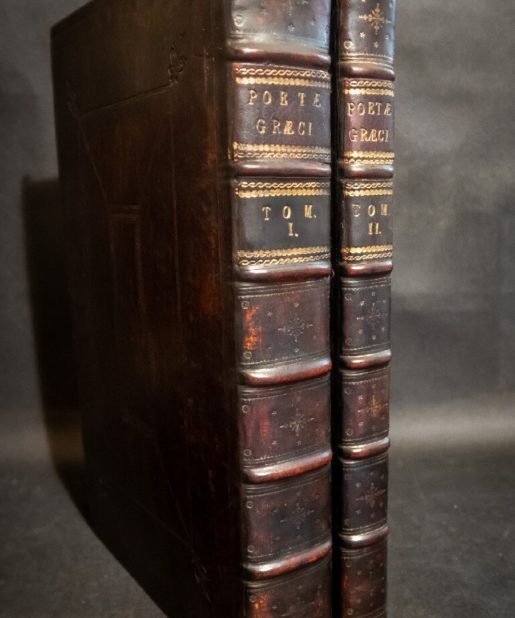
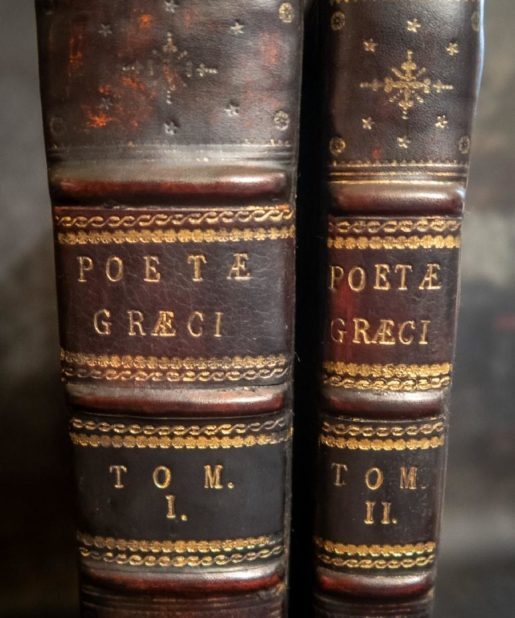
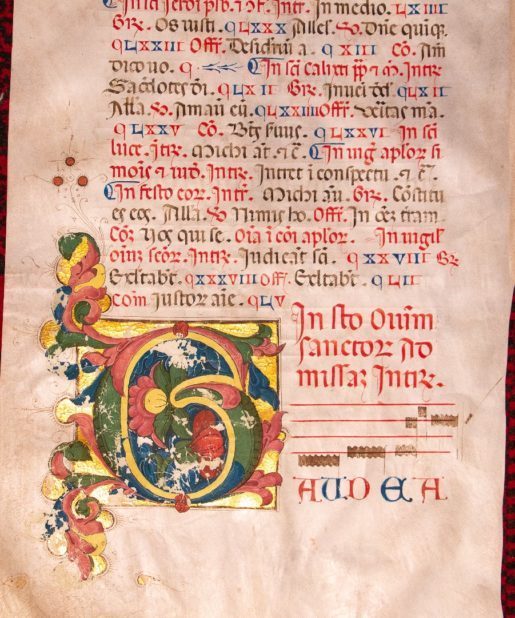
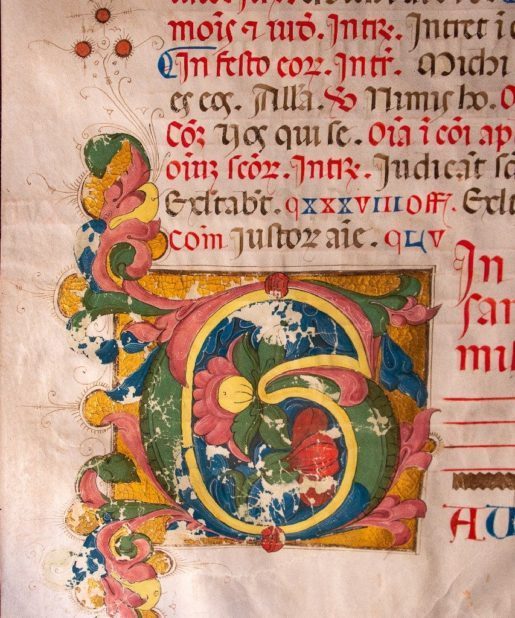
![Leaf of Passionale in Latin [Italy, 12th century, first half] Lives of St Felicity and St Clement Leaf of Passionale in Latin [Italy, 12th century, first half] Lives of St Felicity and St Clement](https://butlerrarebooks.co.uk/wp-content/uploads/2021/01/IMG_0696-515x618.jpg)
Reviews
There are no reviews yet.